ICM (48282)
Scale: 1:48
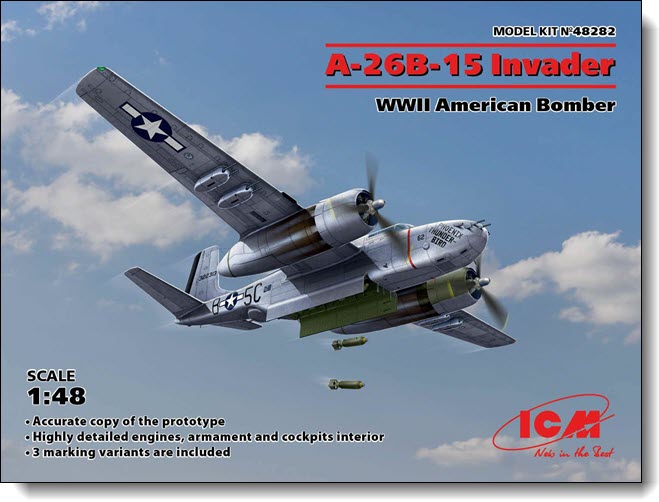
Review |
|
Douglas A-26B-15 Invader (World War II) ICM (48282) Scale: 1:48 |
 |
| The latecomer A-26 Invader combined the largely eclipsed, but historically important, 'Attack' category in the USAAF inventory with that of medium bomber, and proved a highly capable combat aircraft performing this amalgam of roles. The aircraft was intended to offer the weight-carrying capability of the Martin B-26 Marauder and the versatility of the Douglas A-20 Havoc - both excellent designs that served with distinction across all theaters. In short the Invader was to be the attack bomber replacement par excellence. | ||||||
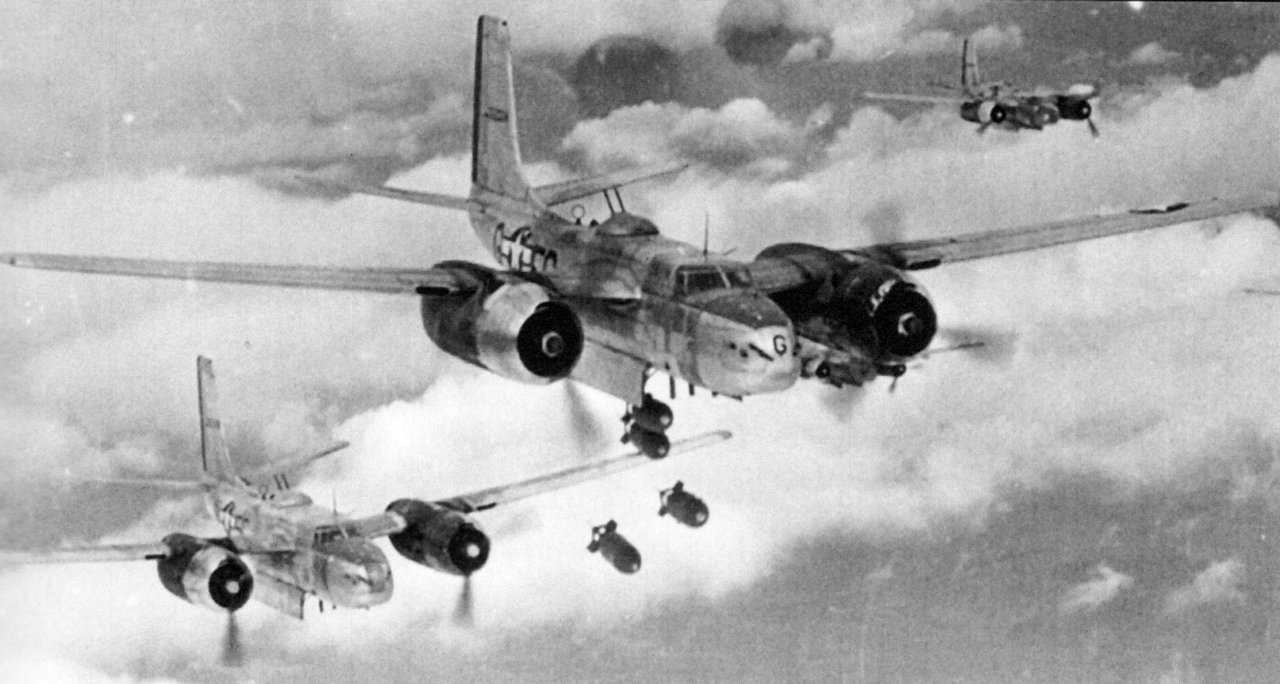 | ||||||
| Following a prolonged period of development, the aircraft would eventually see combat in the European Theater of Operations (ETO) with the Ninth Air Force from late 1944, playing a key role in the tactical bombing campaign carried out by the USAAF in support of the Allied troops on the ground. A small number of Invaders also reached the Twelfth Air Force in Italy, as well as a solitary bomb group in the Pacific. | ||||||
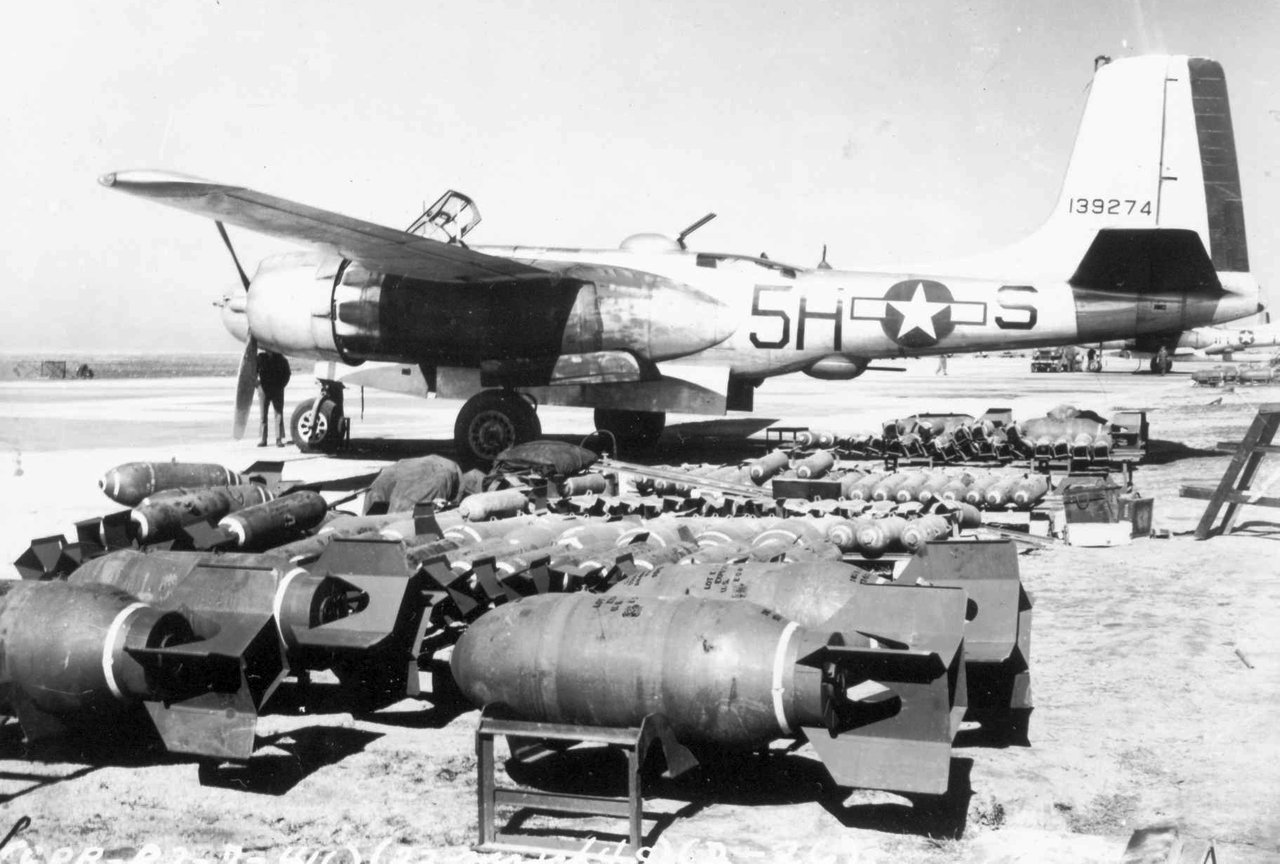 | ||||||
KIT OVERVIEW - ICM 1:48 Douglas A-26B-15 Invader (48282) | ||||||
| In mid 2019 ICM kicked off their new tooled 1:48 A-26/B-26 Invader family with the 8 gun, B-26B-50 in Korean War markings. This second boxing is the earlier A-26B-15 six gun variant, more commonly used in the later part of WW2. In their new 2020 catalog, ICM have shared with us the upcoming A-26/B-26 releases they have planned and not surprisingly they have announced the glass nosed A-26C variant as well as some re-boxing of previous kits with alternate markings (such as the Pacific Theater A-26B-15) | ||||||
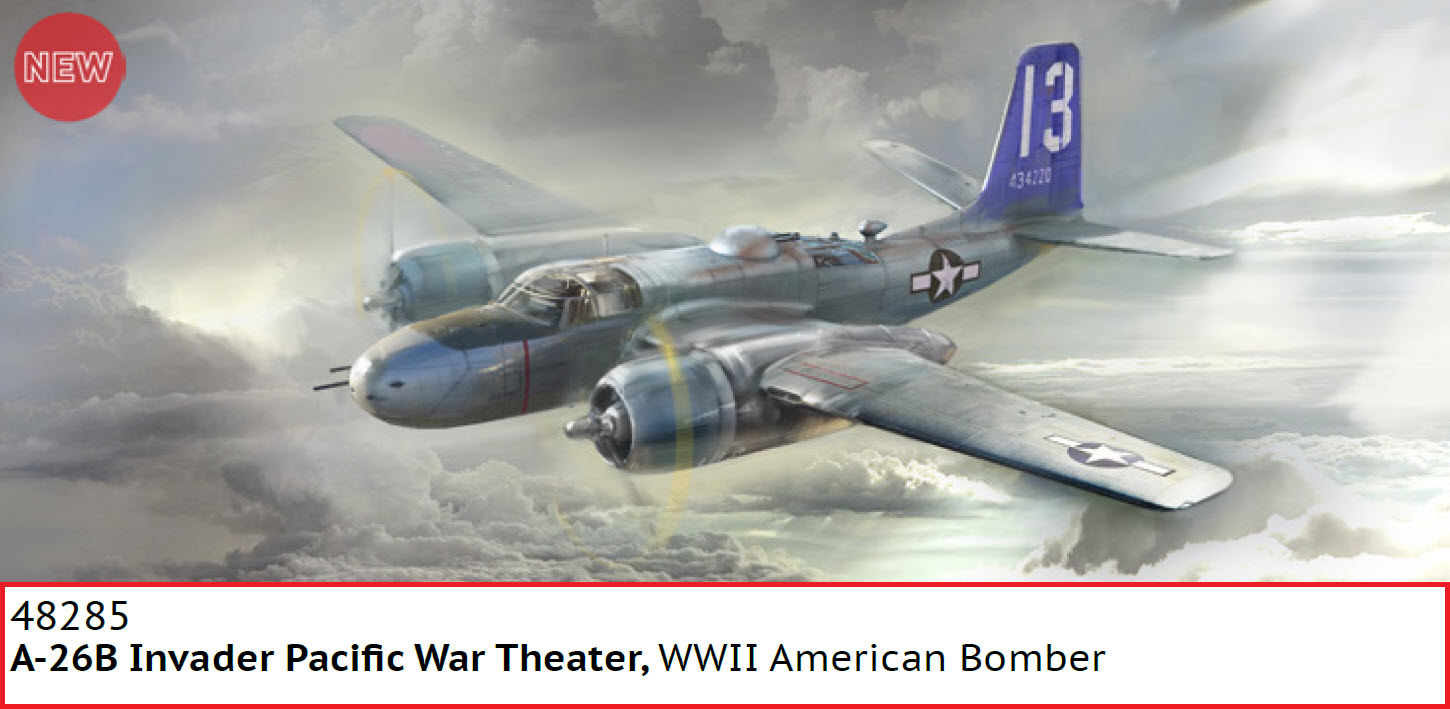 |
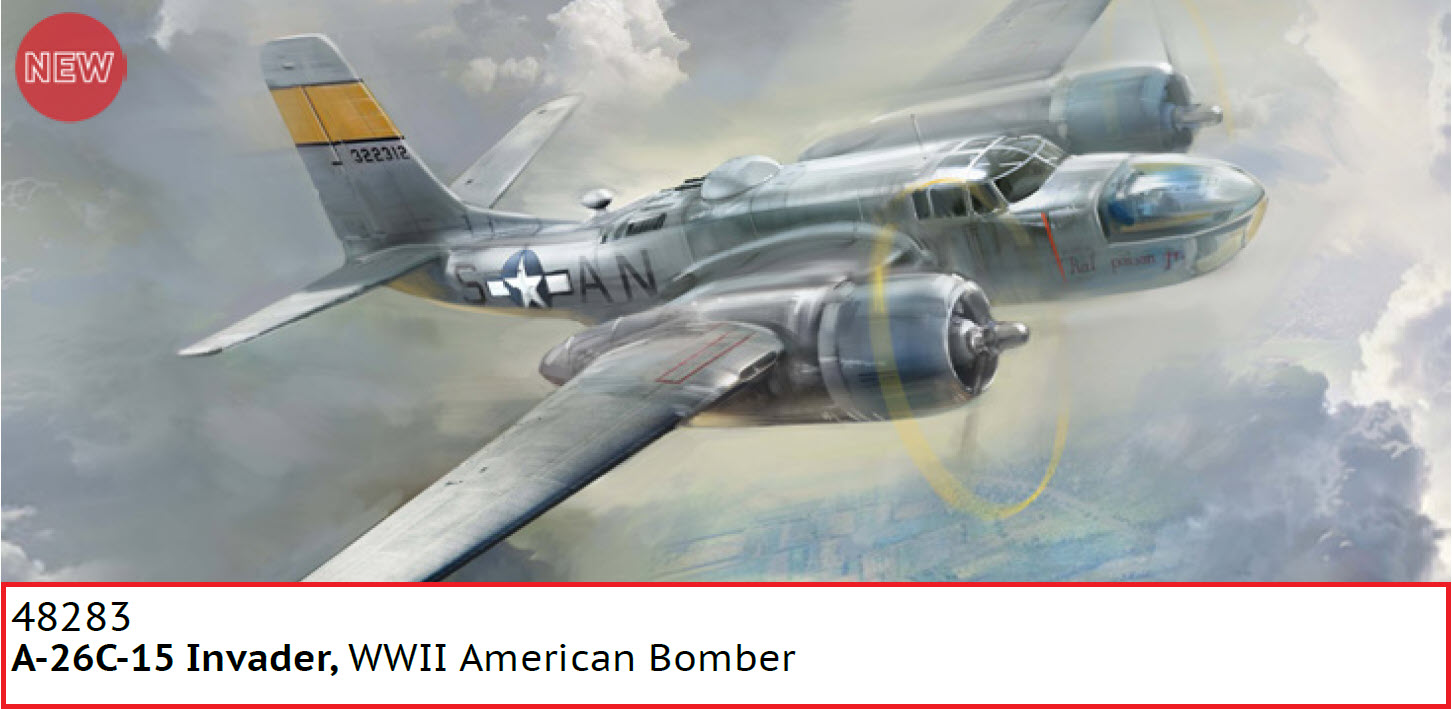 |
|||||
|
ICM once again provide us three marking options in the box, all natural metal as was the norm for USAAF aircraft in the later part of WW2.
As most of the Invaders that saw combat in WW2 were based in the ETO (mostly with the 416th BG) it's to be expected that we would see at least
one option catering for these aircraft.
As the Invader squadrons moved into Europe following D-Day to provide closer support to the advancing allied ground units, they naturally began operating from bases in France (A55 Melum) and Belgium (A92 St Trond) during early 1945. Its also good to see ICM include an option for the 47th BG who flew the Invader in the MTO out of Italy, also in early 1945. The only markings that are missing are for a PTO based Invader but I note that ICM have reserved those for another boxing coming in 2020. |
||||||
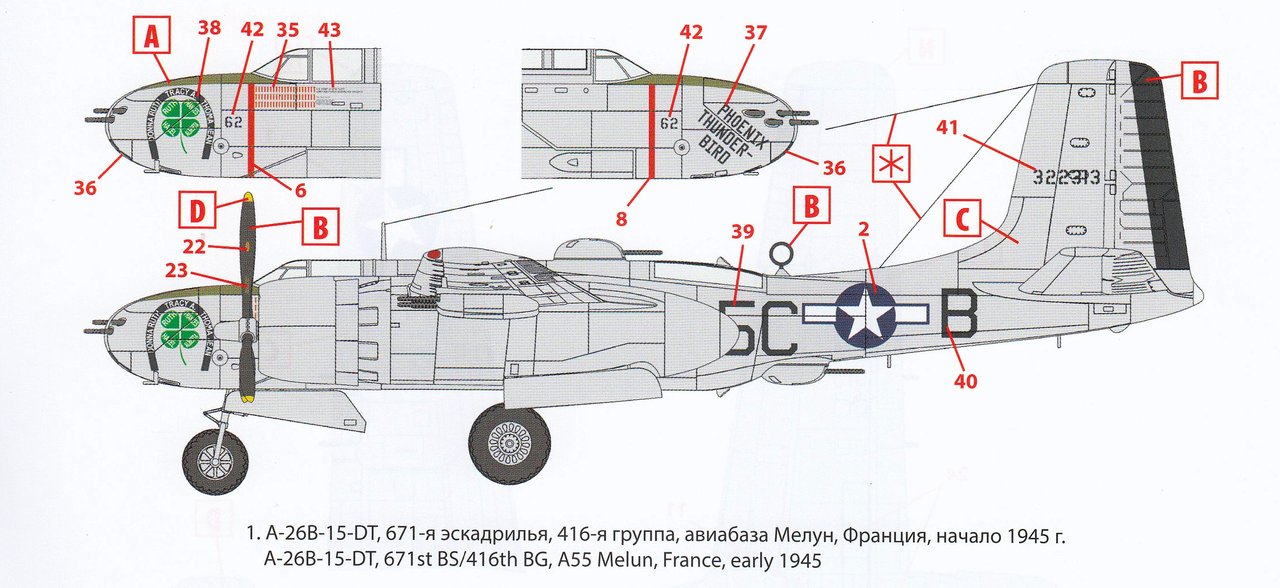 | ||||||
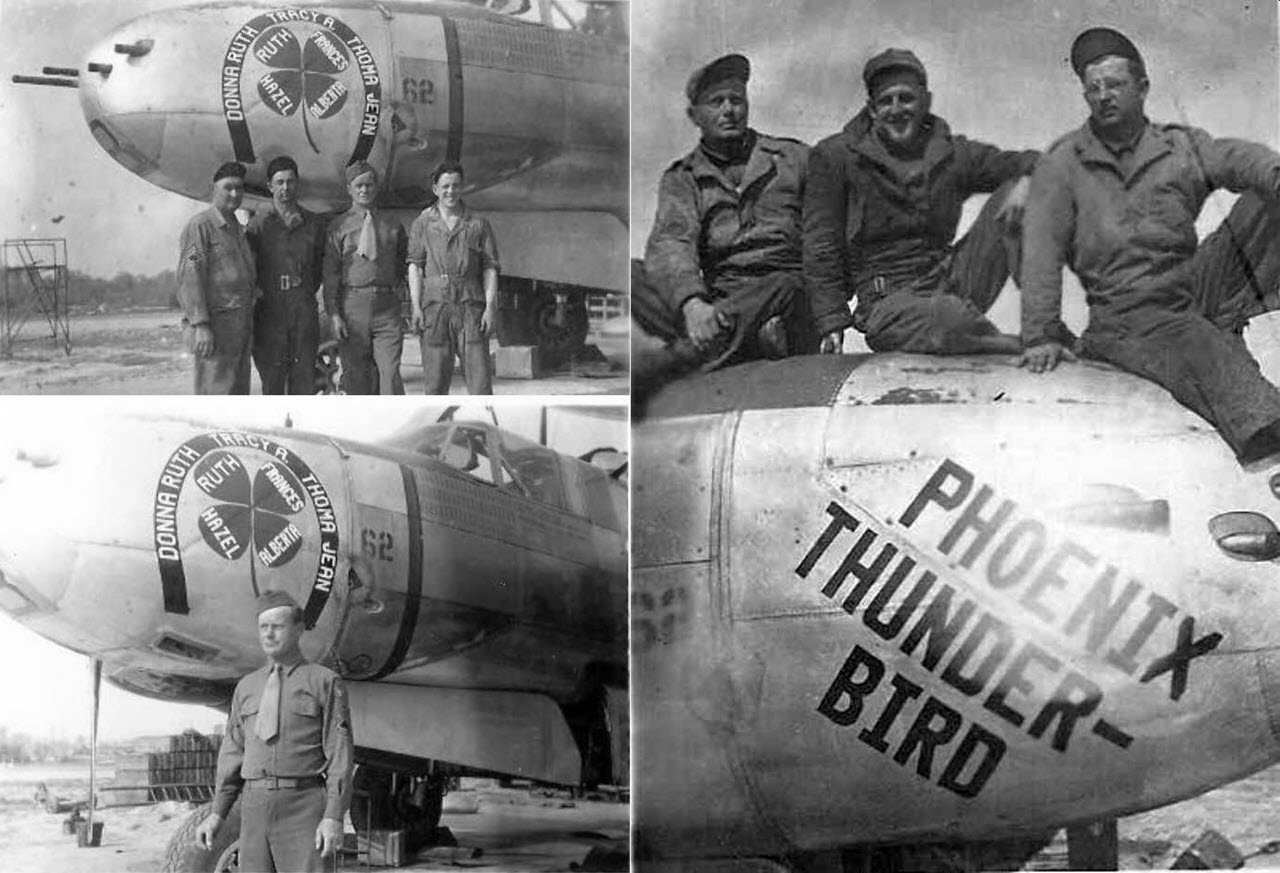 | ||||||
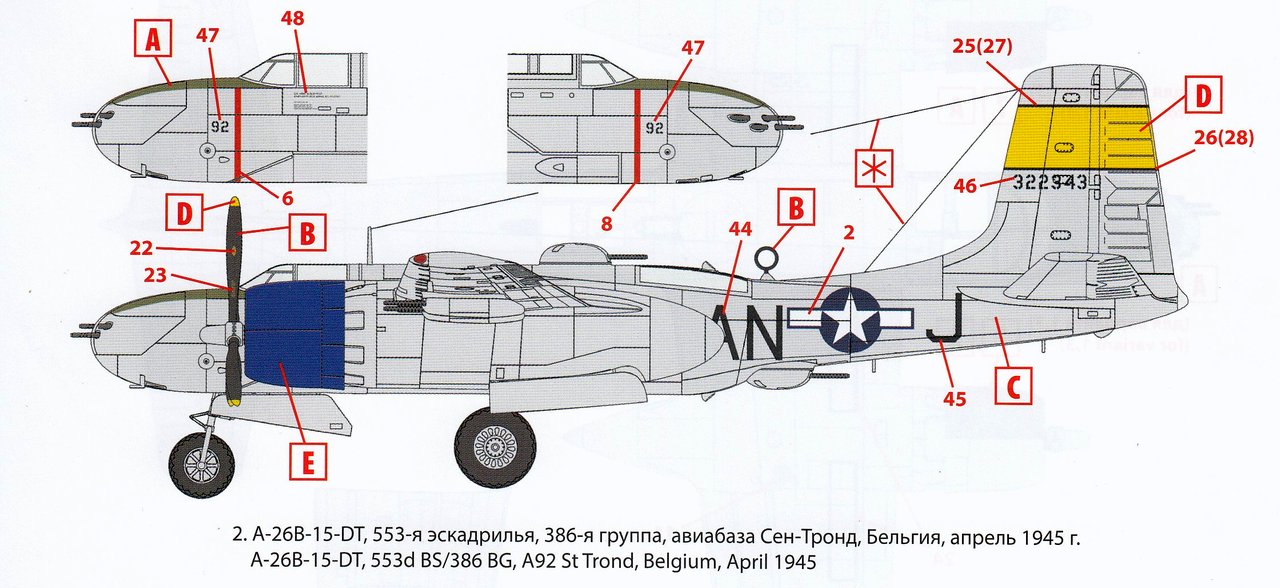 | ||||||
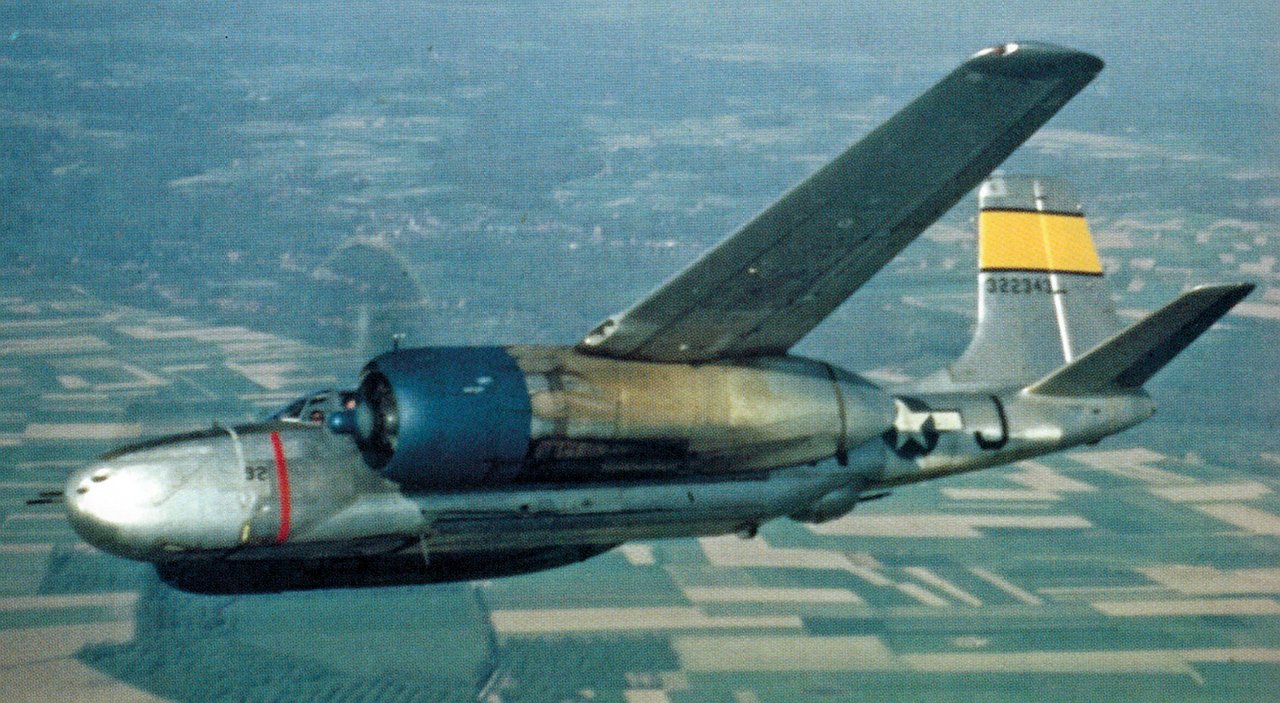 | ||||||
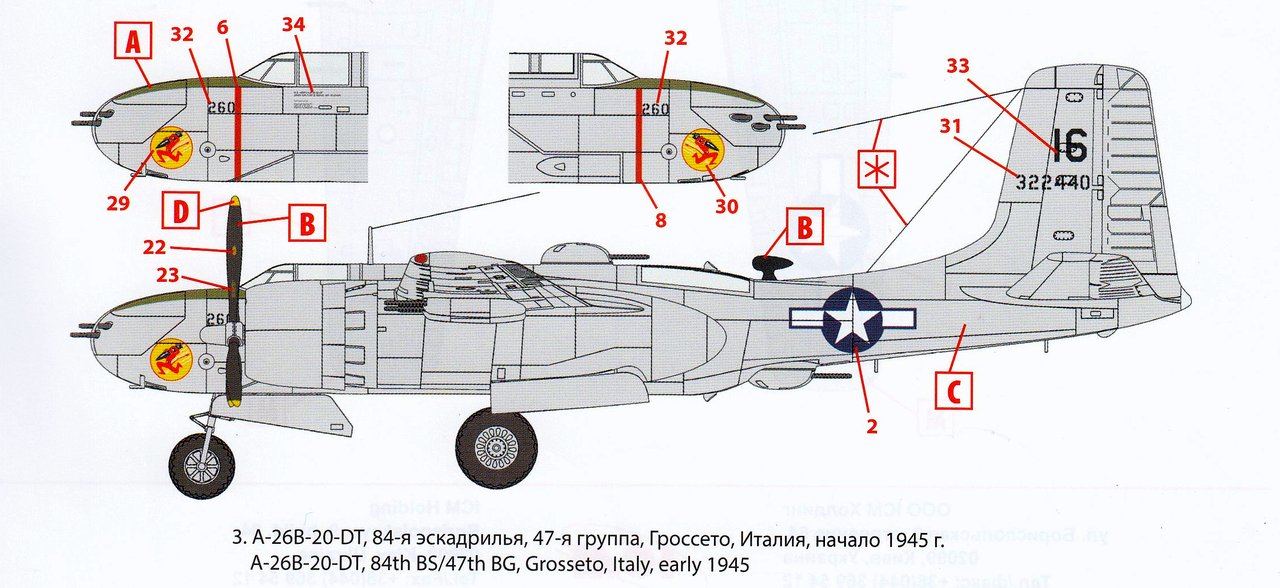 | ||||||
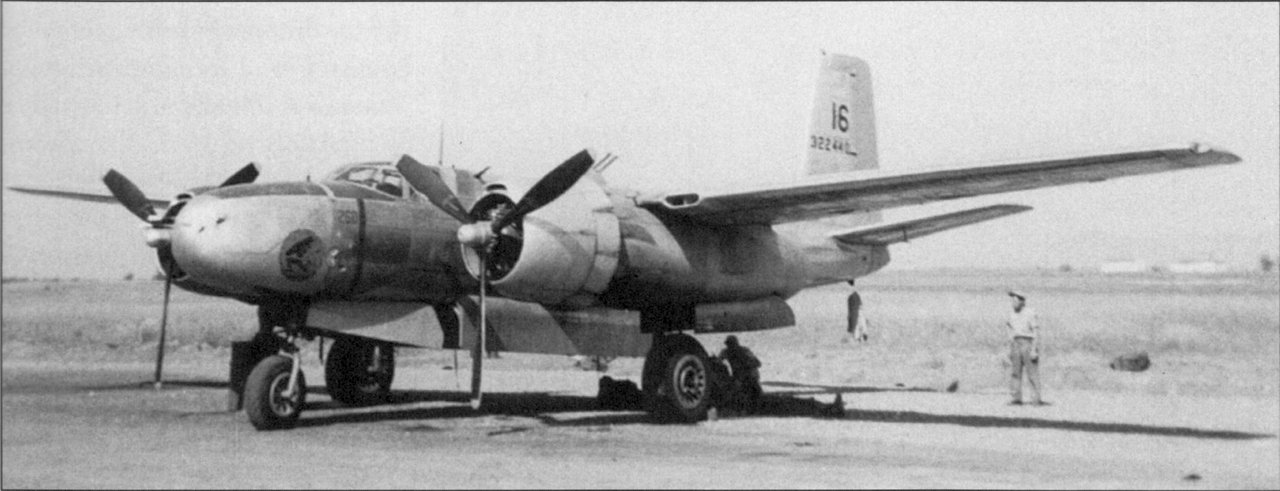 | ||||||
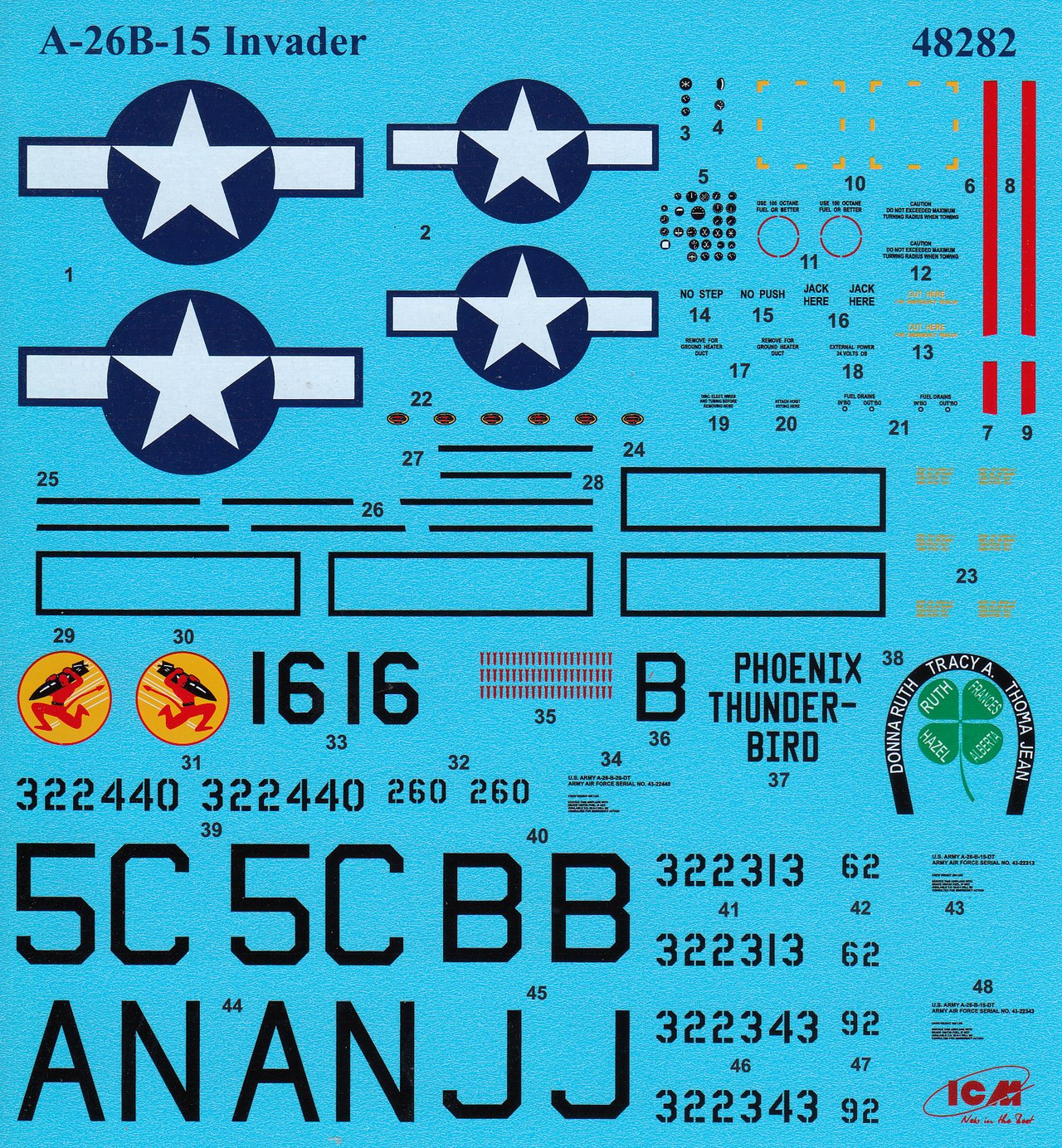 | ||||||
| If none of the markings provided in the box appeal then ICM have also released an additional set of decals for purchase. Sheet D4801 features four WW2 aircraft, each with distinctive nose art. Again it's no surprise that most of these are from the 416th BG in the ETO. | ||||||
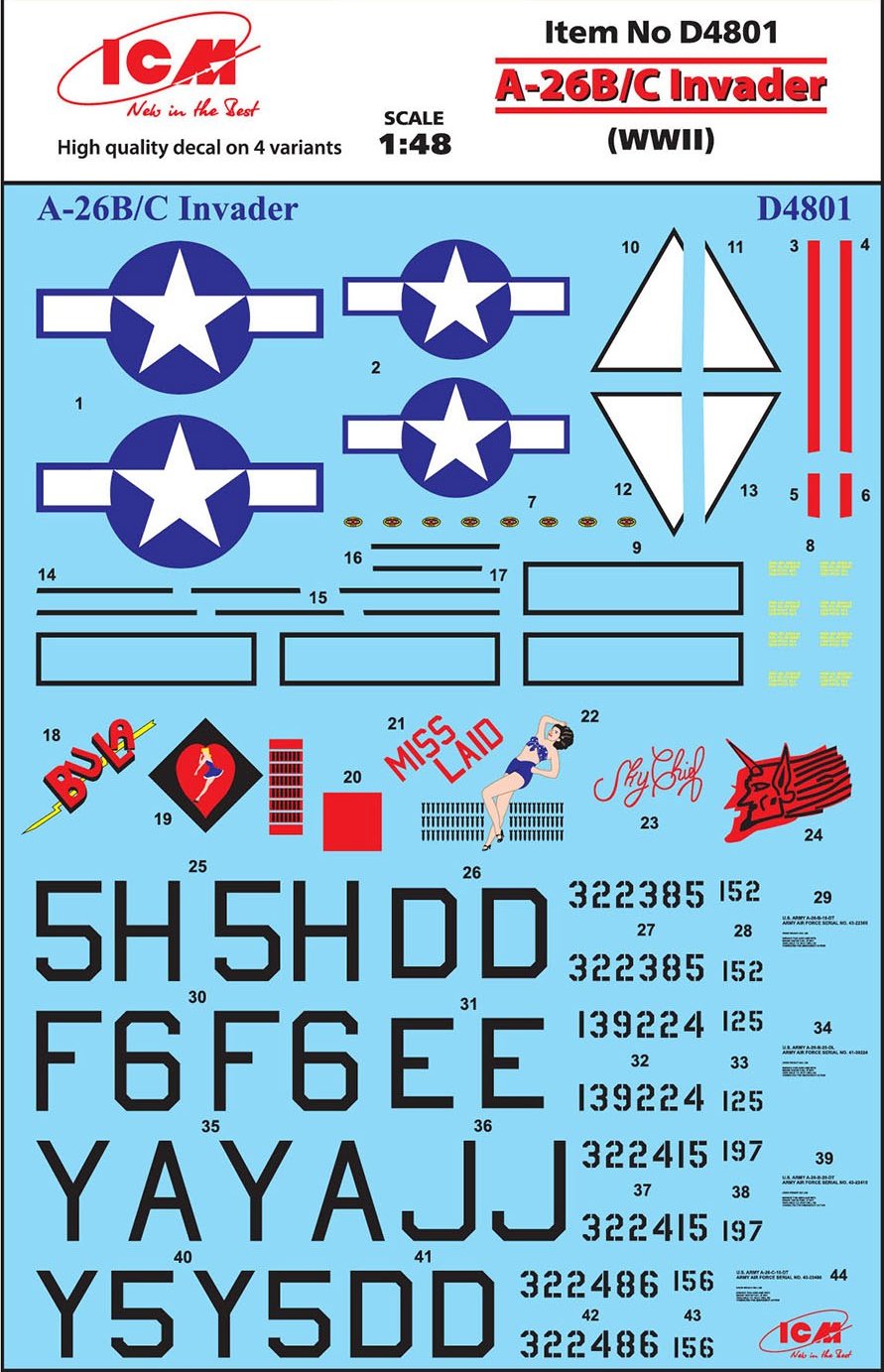 |
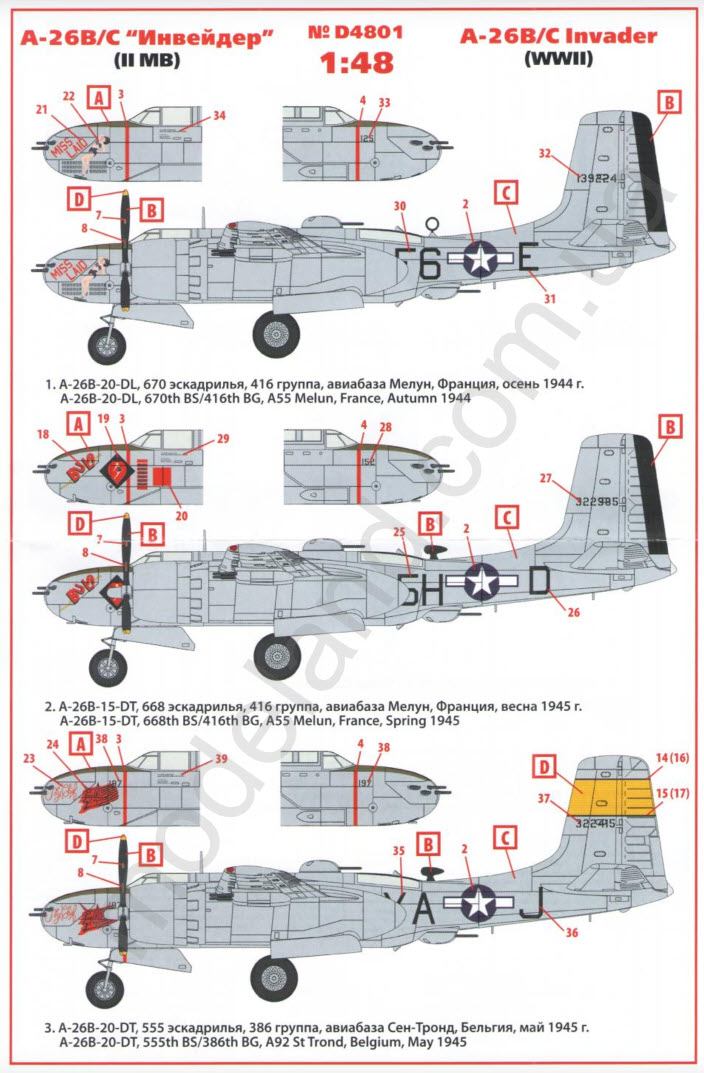 |
|||||
| I have previously undertaken a pretty extensive review of the first ICM boxing of the B-26B-50 Korean war Invader which can be found here. This time around I will focus on what has changed in this new boxing and as you can imagine from a kit perspective it's not a whole lot, but lets dig in and have a proper look. | ||||||
COMPARISON - ICM 1:48 Douglas A-26B-15 Invader (48282) | ||||||
| So what are the major differences between a WW2 (A-26B-15) and Korean (B-26B-50) Invader ? Well most of it resides in the nose and canopy and as this drawing shows, the Invaders used during WW2 service were fitted with six .50 cal guns, configured asymmetrically with 4 on the right and 2 on the left. The early Invaders also had the flat top canopy which was unpopular with crews as it limited visibility and was hard to use during a bailout. | ||||||
 | ||||||
| Douglas certainly had flexibility in mind when designing the Invader. They originally had big plans for the number of options that could be fitted to the nose of the A-26. In the end however only two (the six and eight gun) of these proposed configurations entered mass production. Some of the larger guns (37mm and 75mm) were even fitted and trialed on the XA-26B prototypes. | ||||||
 | ||||||
| A quick scan of the kit sprues reveals that the parts marked in red by ICM are those which are specific to the Korean war boxing and are mostly related to the 8 gun nose, clamshell canopy and converted drop tank napalm bombs. The internal wing mounted .50 cal guns parts are also marked as unused in this release. Sprue H is entirely new and features the new parts for the A-26B-15 variant. ICM have marked the clamshell canopy as not used although I have seen period photos of A-26B's in very late WW2 service fitted with that canopy, it's just not applicable to any of the marking options provided by ICM. | ||||||
 |
 |
|||||
| H is the only new sprue and whilst small it contains the new single piece nose, the blanking plates for the wing leading edge, the .50 cal barrels and the original loop antenna (which would later be faired over). It's interesting that ICM decided to mold the nose for the six gun invader as one piece because the original 8 gun nose was made up from no less than four parts. | ||||||
 | ||||||
| One noticeable difference between the eight gun and six gun noses is the use of blast tubes. On the six gun nose the blast tubes are clearly all the same length and so the two top guns on the right side extend out past the tubes, revealing the cooling jacket of the .50 cal barrels. On the later eight gun nose all barrels are covered completely by the blast tubes. | ||||||
 |
 |
|||||
| A quick dry assembly of the new nose results in a snug fit with no obvious step or gaps. ICM do provide small locating lugs on the mating parts but I would recommend these be beefed up with some strip plastic card to ensure the join is a flush as possible. | ||||||
 | ||||||
| Its not often you see period photos of the underside of combat aircraft. This Invader suffered a main undercarriage failure and so affords us a good view of the spent shell ejection chutes on the nose. These are essentially small rectangular slots through which the shell casing are ejected once the round is fired. | ||||||
 | ||||||
| ICM do provide the outlines for the three ejection chutes, but these could be improved greatly with a sharp knife and some plasticard. This angle once again shows the generally good fit of the single piece nose to the fuselage. | ||||||
 | ||||||
| Originally, provisions were made for the carrying of either one or two twin .50 cal machine gun pods under each wing. Ammunition for these guns were carried internally within the wing and loaded from above. While these were used quite frequently during early deployments of the A-26B, it was found that the pods (or tubs) introduced substantial drag and a reduction in speed. As a result, Douglas introduced a modification that mounted three .50 cal guns wholly within each wing which reduced drag significantly. | ||||||
 |
 |
|||||
| The gun pods are assembled in steps 91 thru 94 and be sure to pay attention to the difference in the staggered position of the barrels present on parts D33 and D41. The ICM molding of the cooling jacket on the barrels is OK but replacement with a brass barrel will be very worthwhile. | ||||||
 | ||||||
| When I reviewed the original B-26B-50 Korean war kit I noted that ICM had included the wrong access panels to be accurate for a aircraft with the three internal wing guns fitted. Monogram had got it right as this comparison shows. Now with this second boxing the ICM access doors are finally accurate as they represent the ammo loading doors for the underwing gun pods. | ||||||
 | ||||||
| Armorers load the .50 cal ammo belts for the gun pods into the wing from above using the small access panels. | ||||||
 | ||||||
| The final change in this earlier Invader kit is the use of the 'flat top' canopy. ICM conveniently provides the access hatch (G3) as a separate part (something they do not do with the clamshell canopy). This will allow modellers to display the canopy open and afford a better view of the cockpit interior. | ||||||
 | ||||||
| Like the prototypes, early A-26Bs were fitted with a heavy framed flat canopy over the cockpit which opened upward on the starboard side over the navigators seat. This arrangement made it nearly impossible for the pilot to make an emergency exit from the cockpit. Further, the heavy canopy framing severely restricted visibility from the cockpit. One advantage of the flat top canopy (over the later higher clamshell) was it provided adequate clearance for the upper turret to be traversed forward and fired by the pilot in conjunction with the nose guns. | ||||||
 | ||||||
CONCLUSION - ICM 1:48 Douglas A-26B-15 Invader (48282) | ||||||
| ||||||
ASSEMBLY INSTRUCTIONS - ICM 1:48 Douglas A-26B-15 Invader (48282) | ||||||
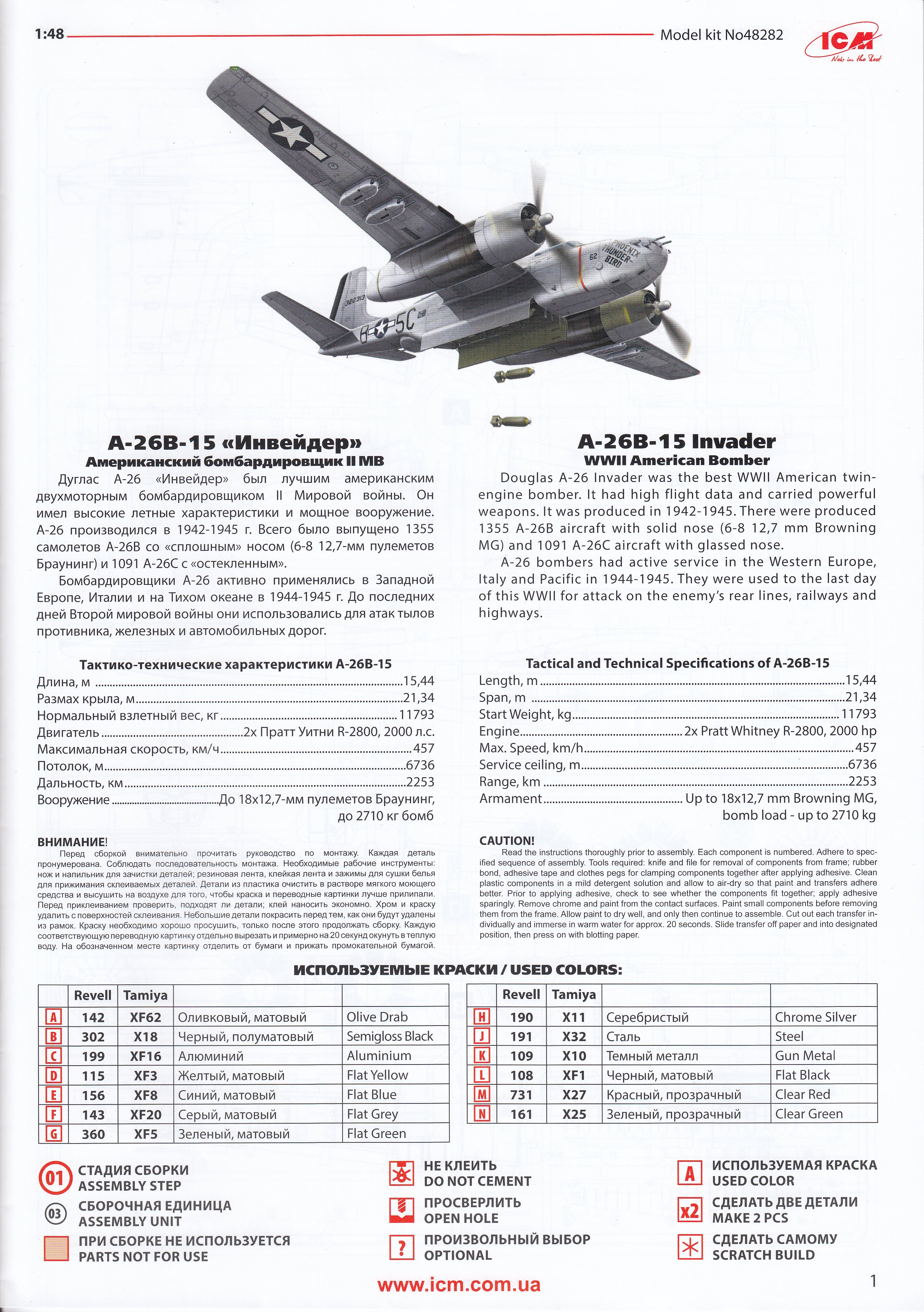
|
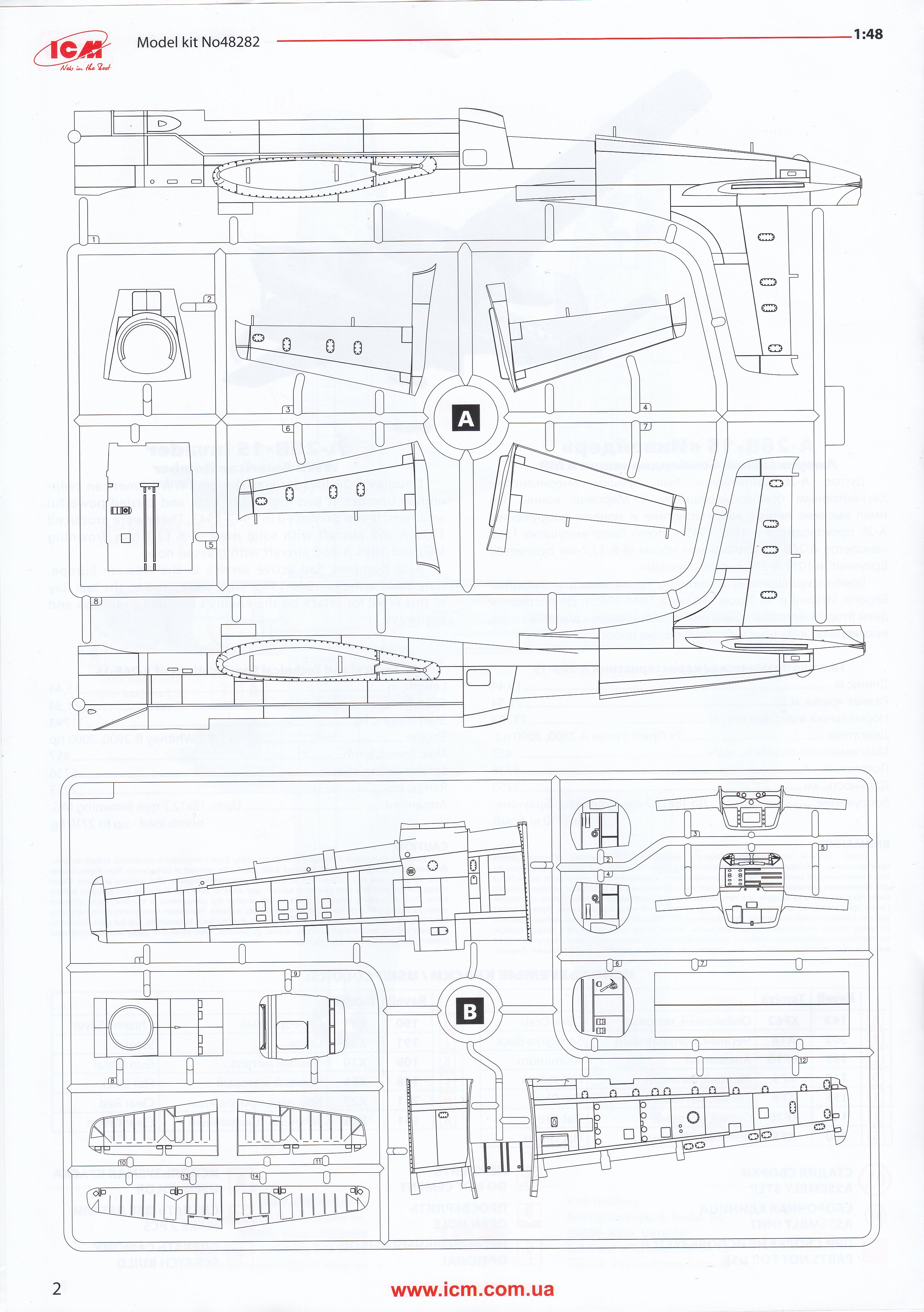
|
|||||
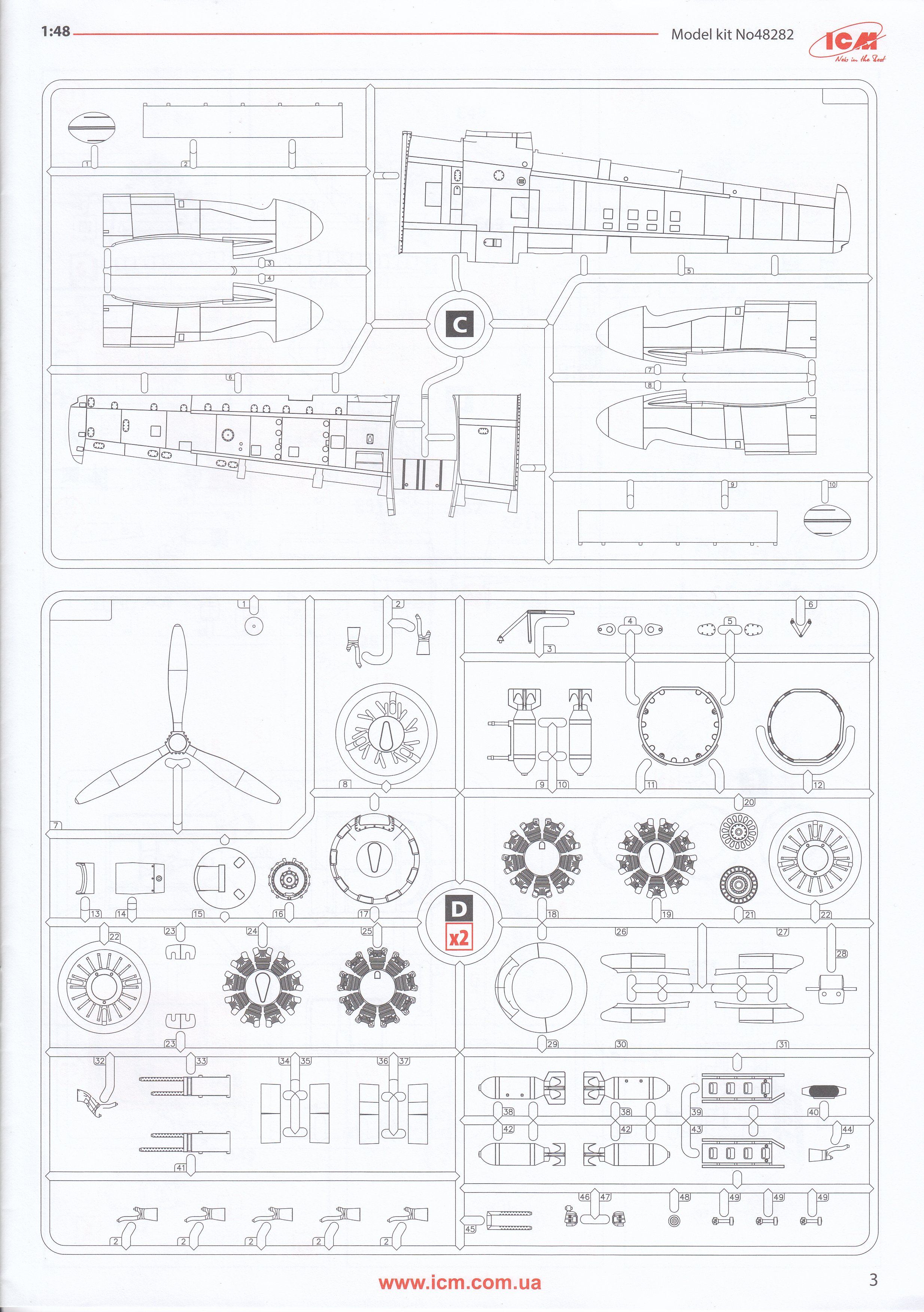
|
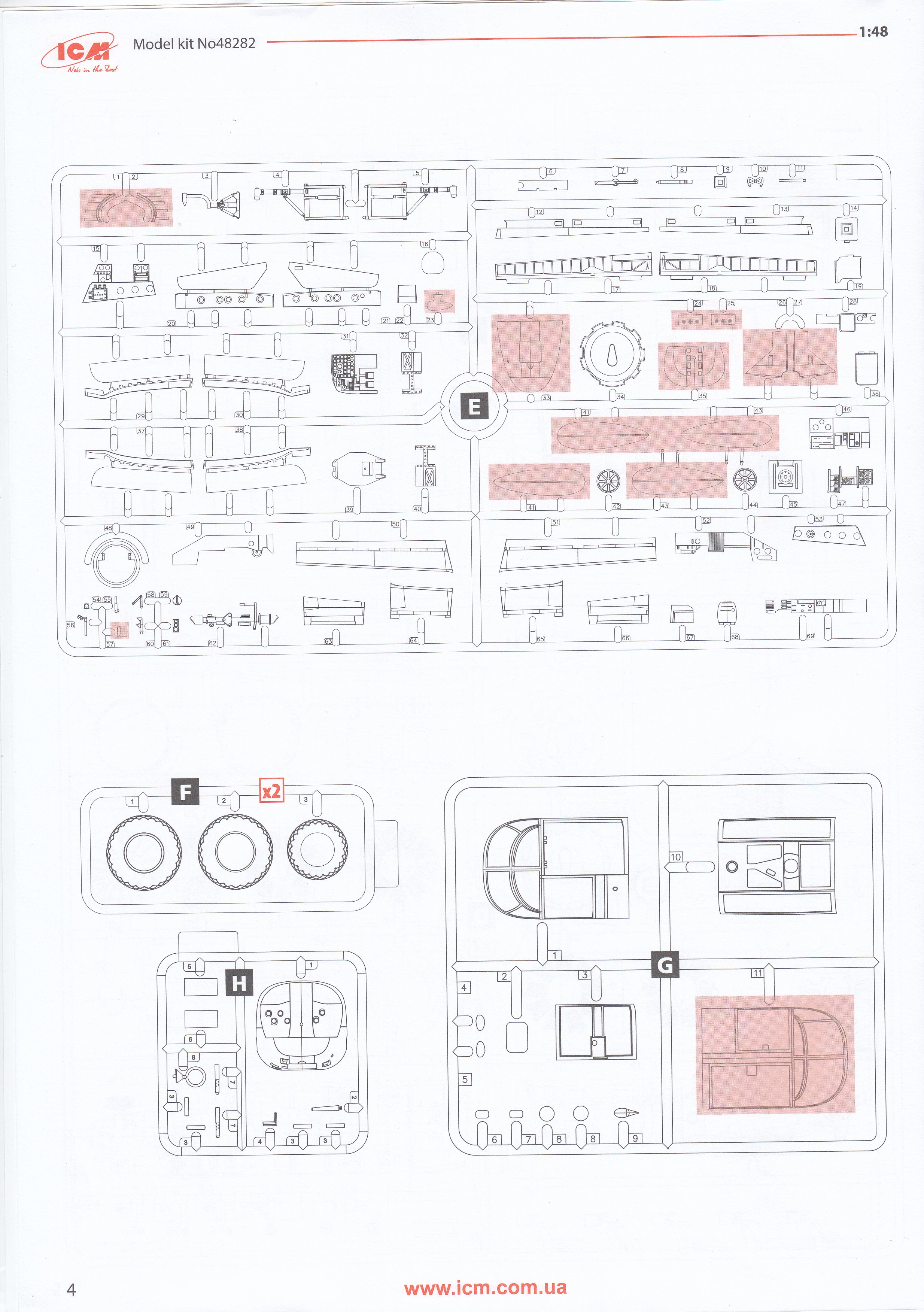
|
|||||
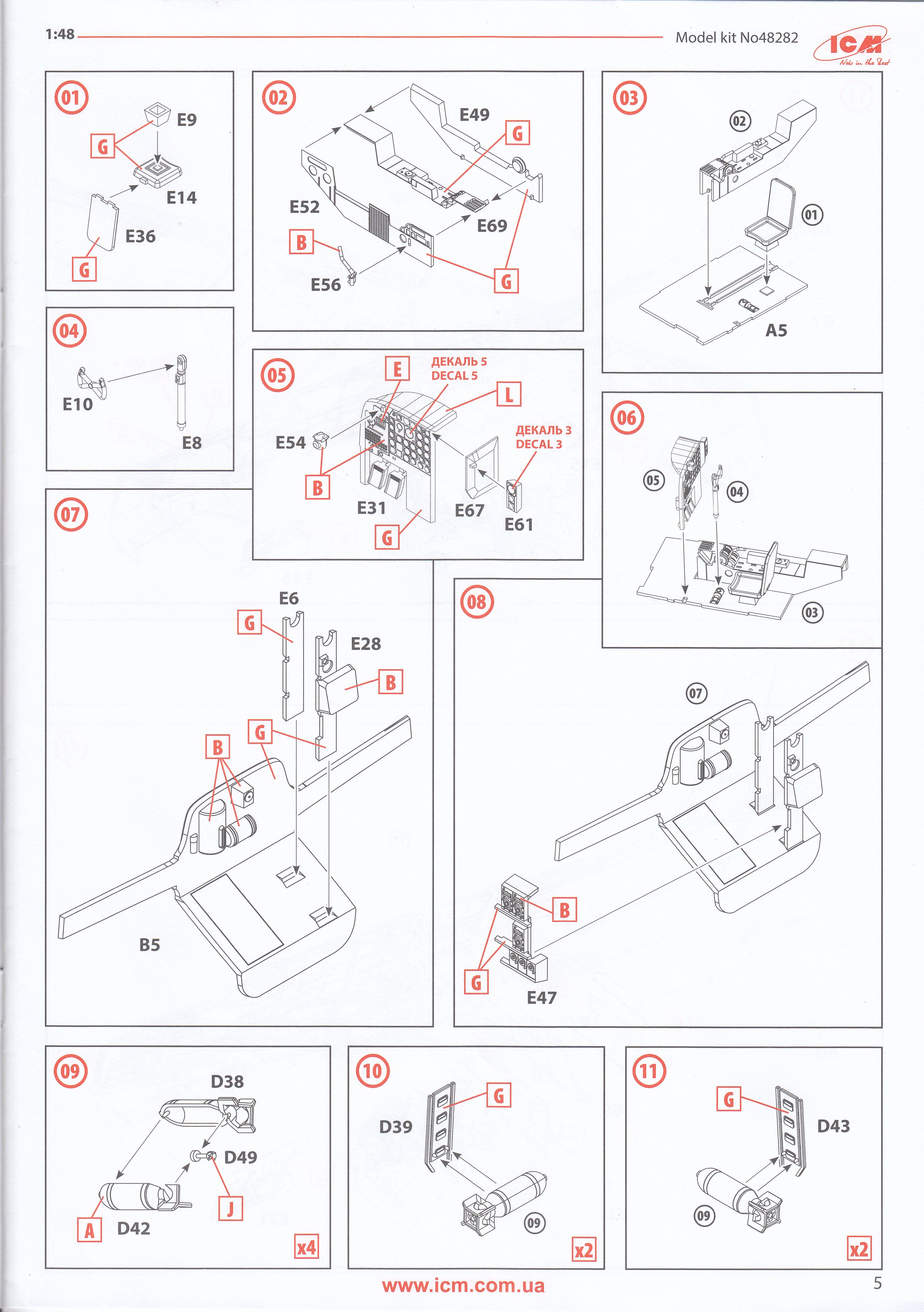
|
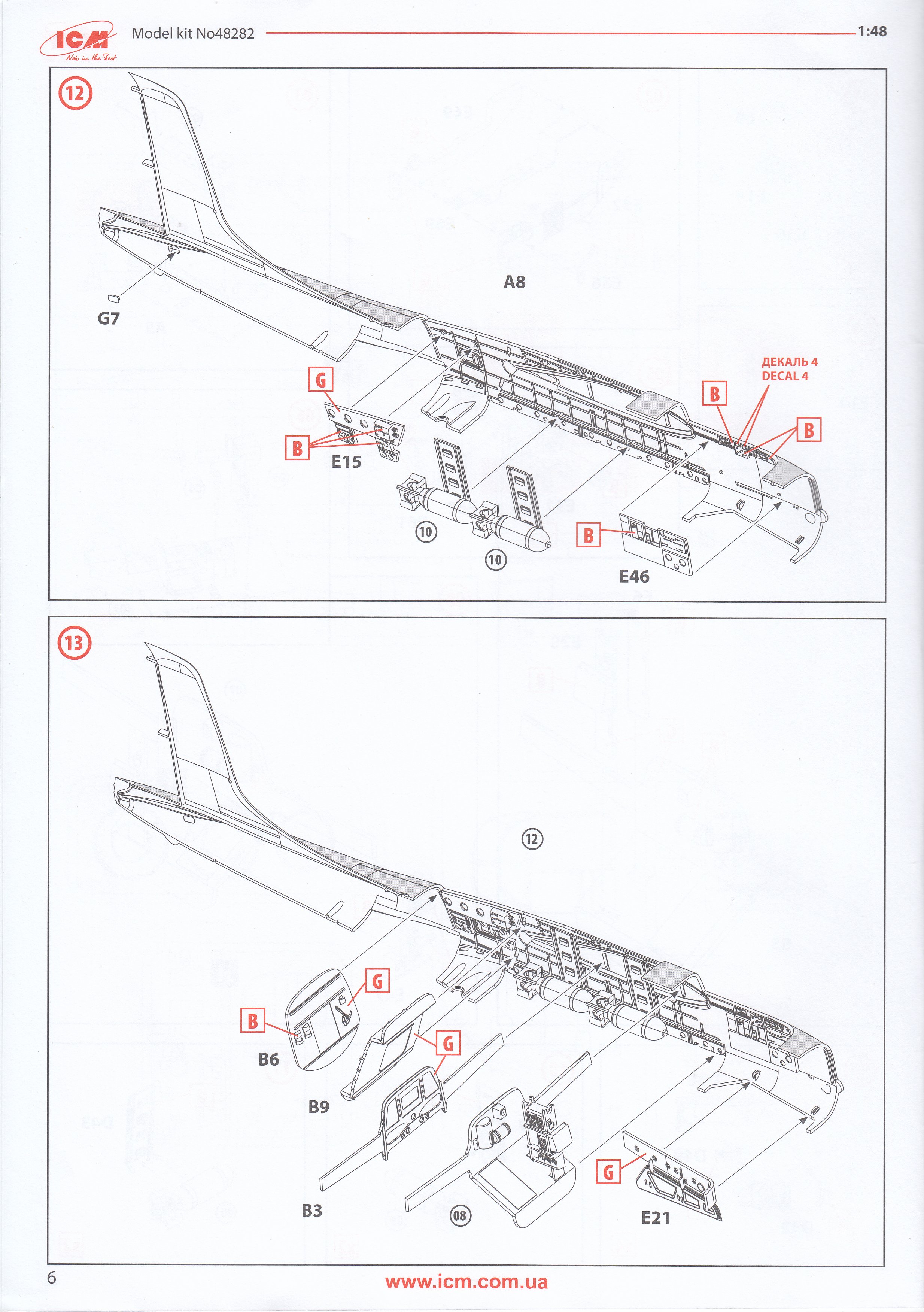
|
|||||
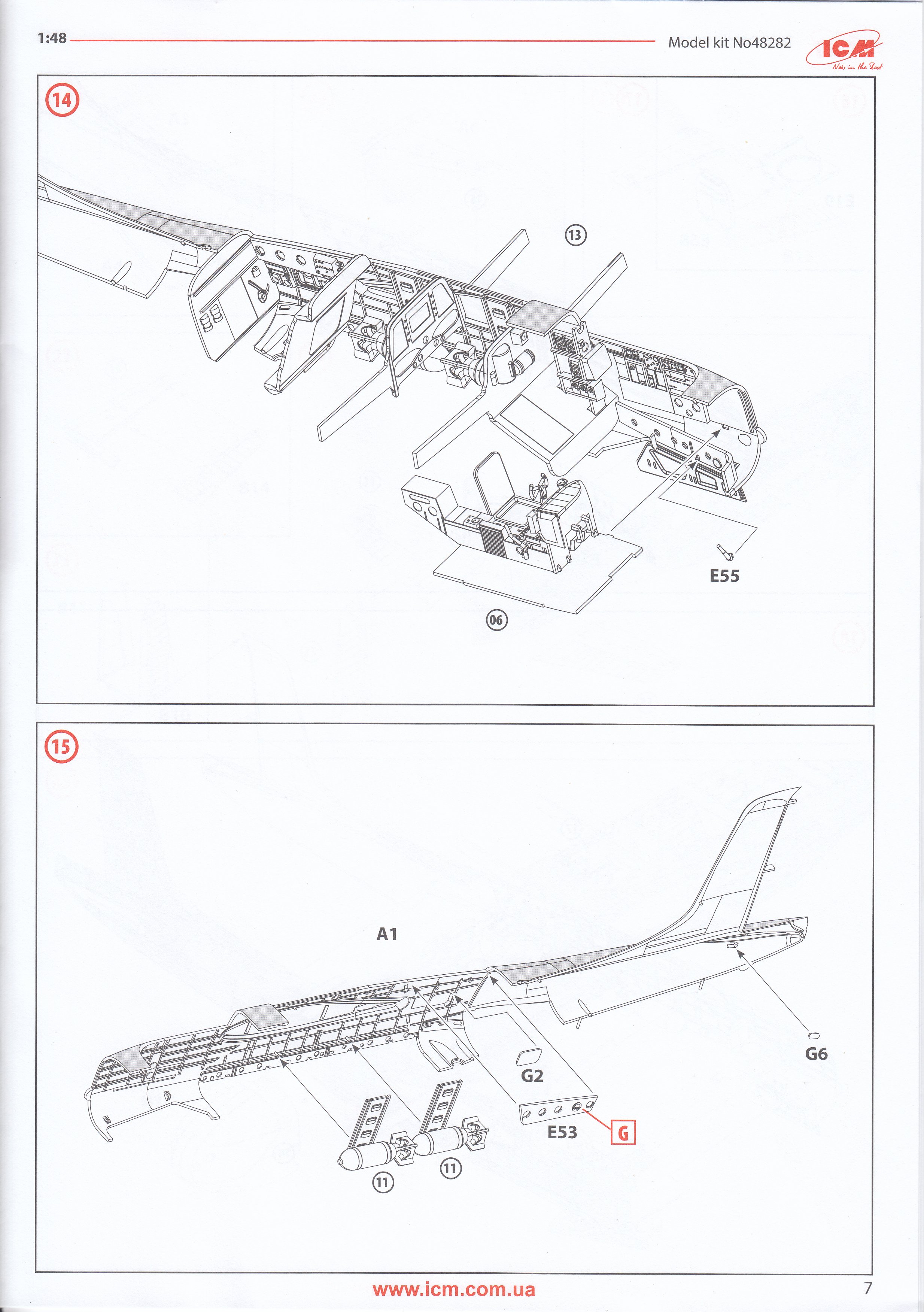
|
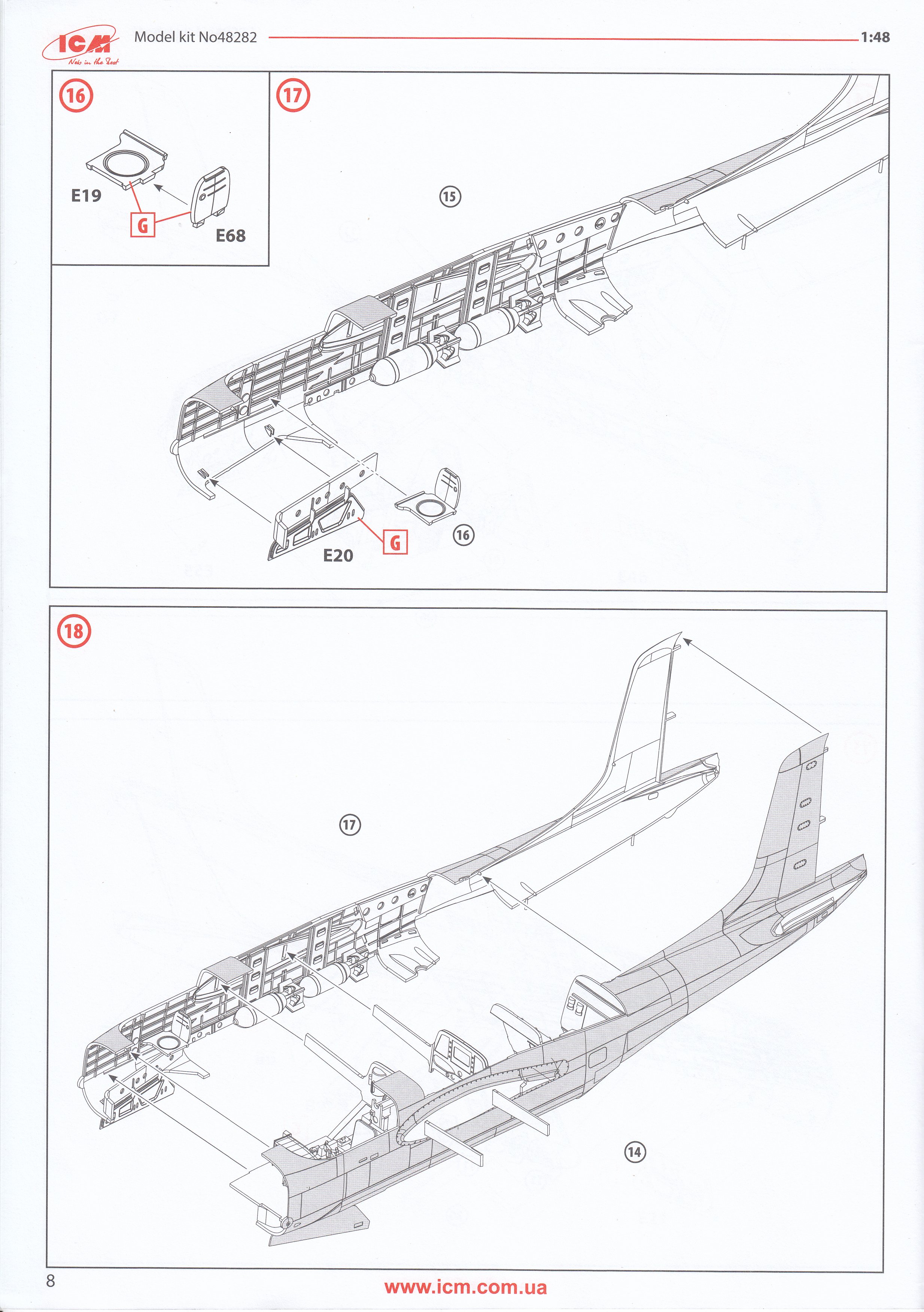
|
|||||
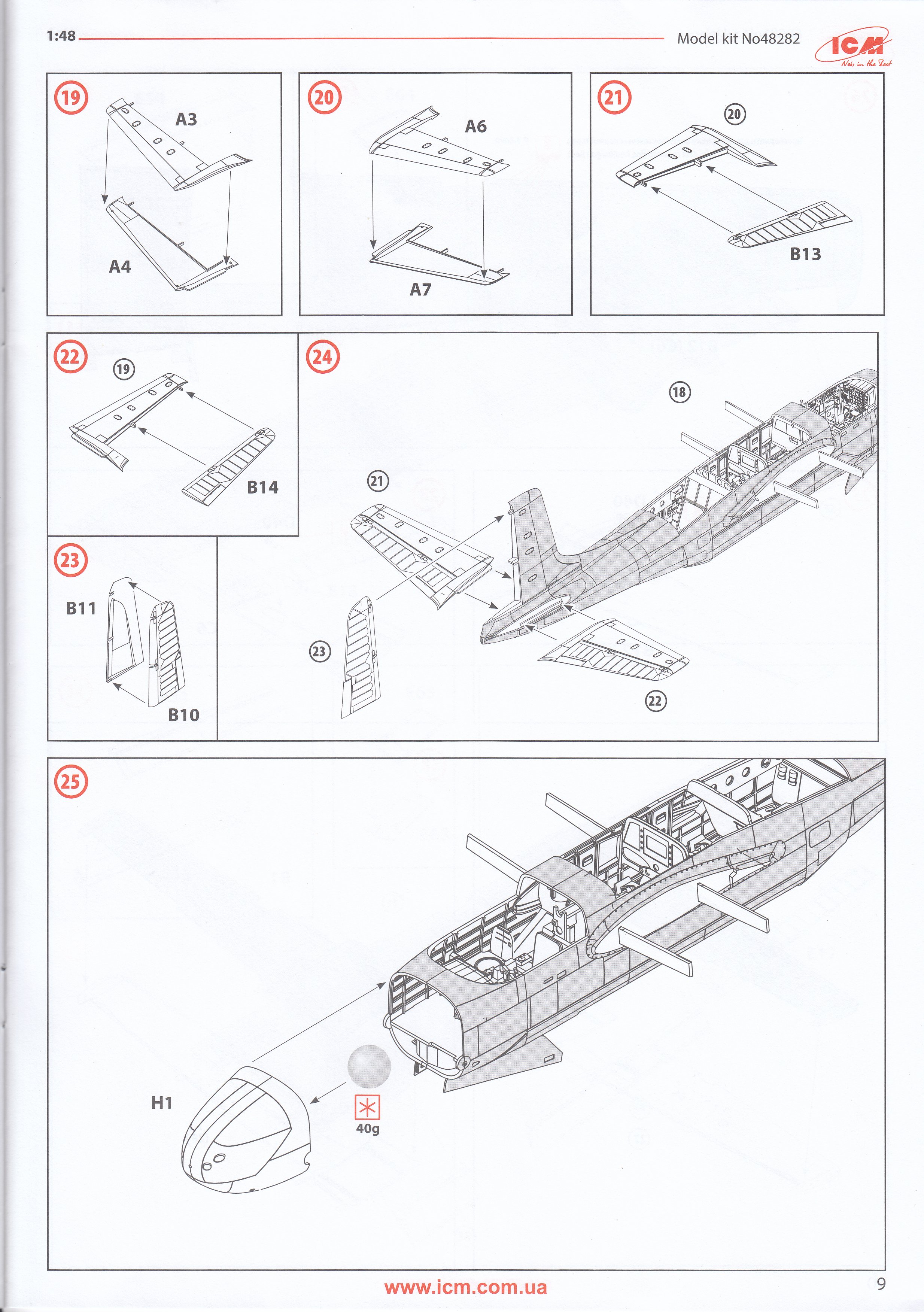
|
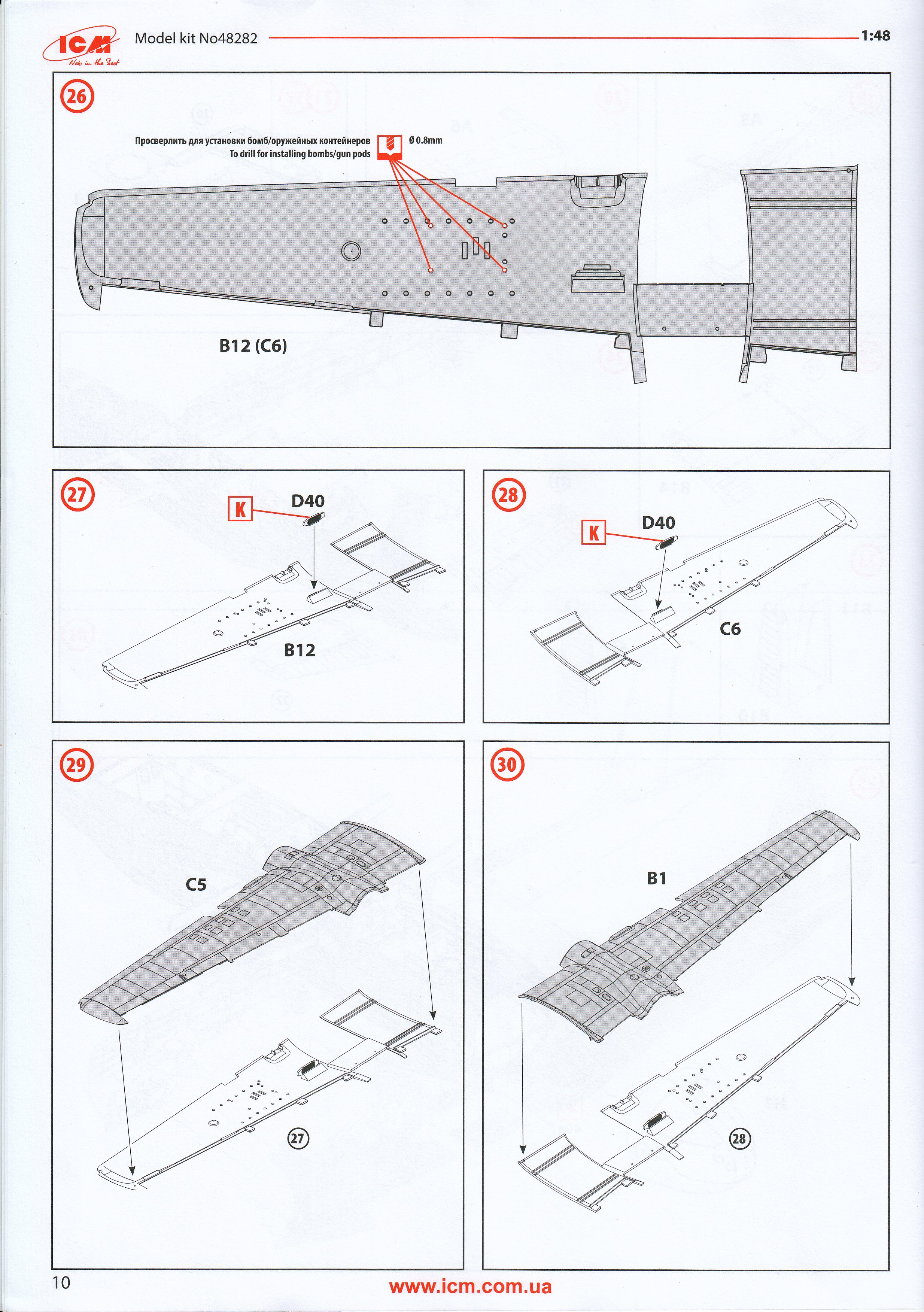
|
|||||
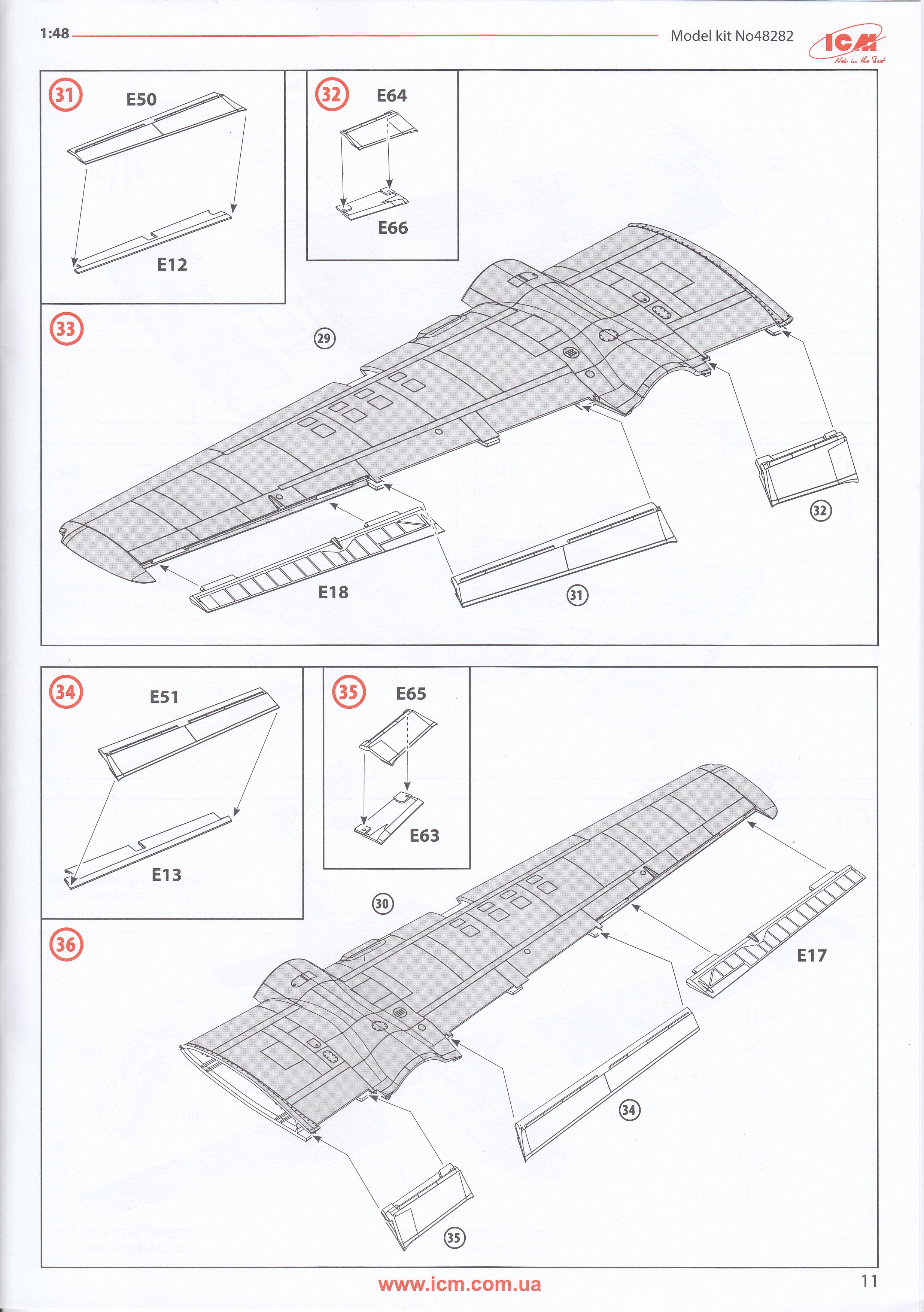
|
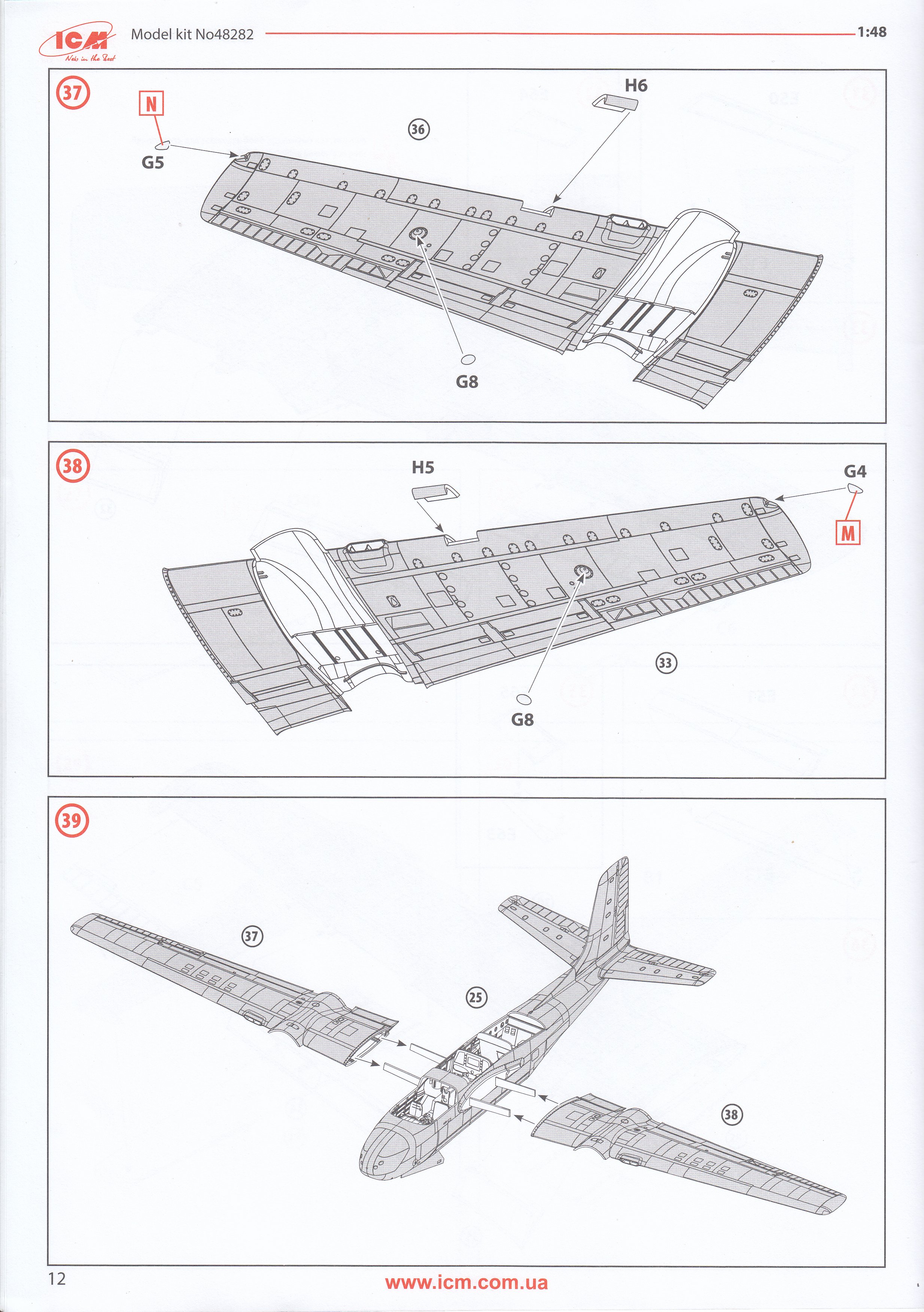
|
|||||
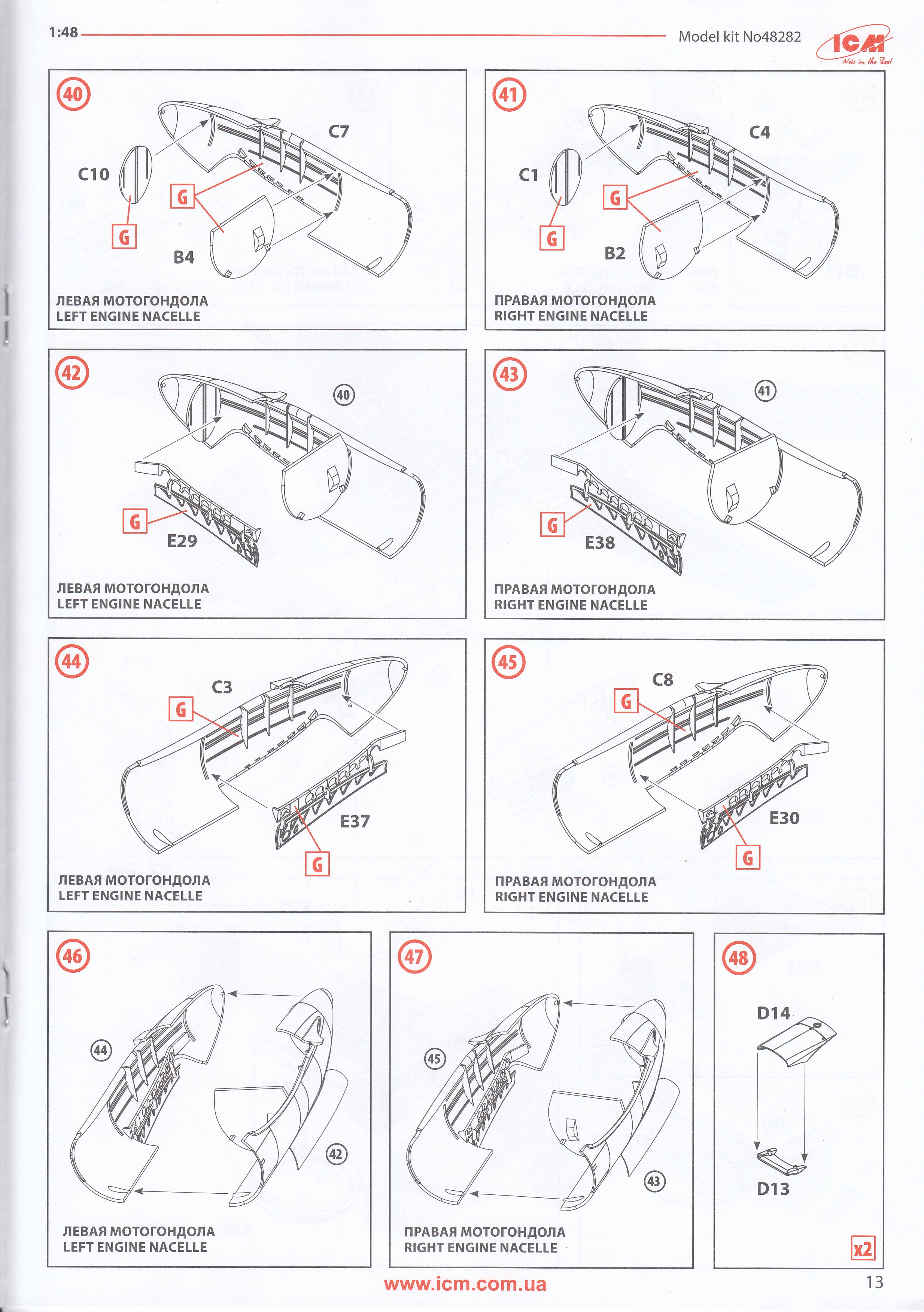
|
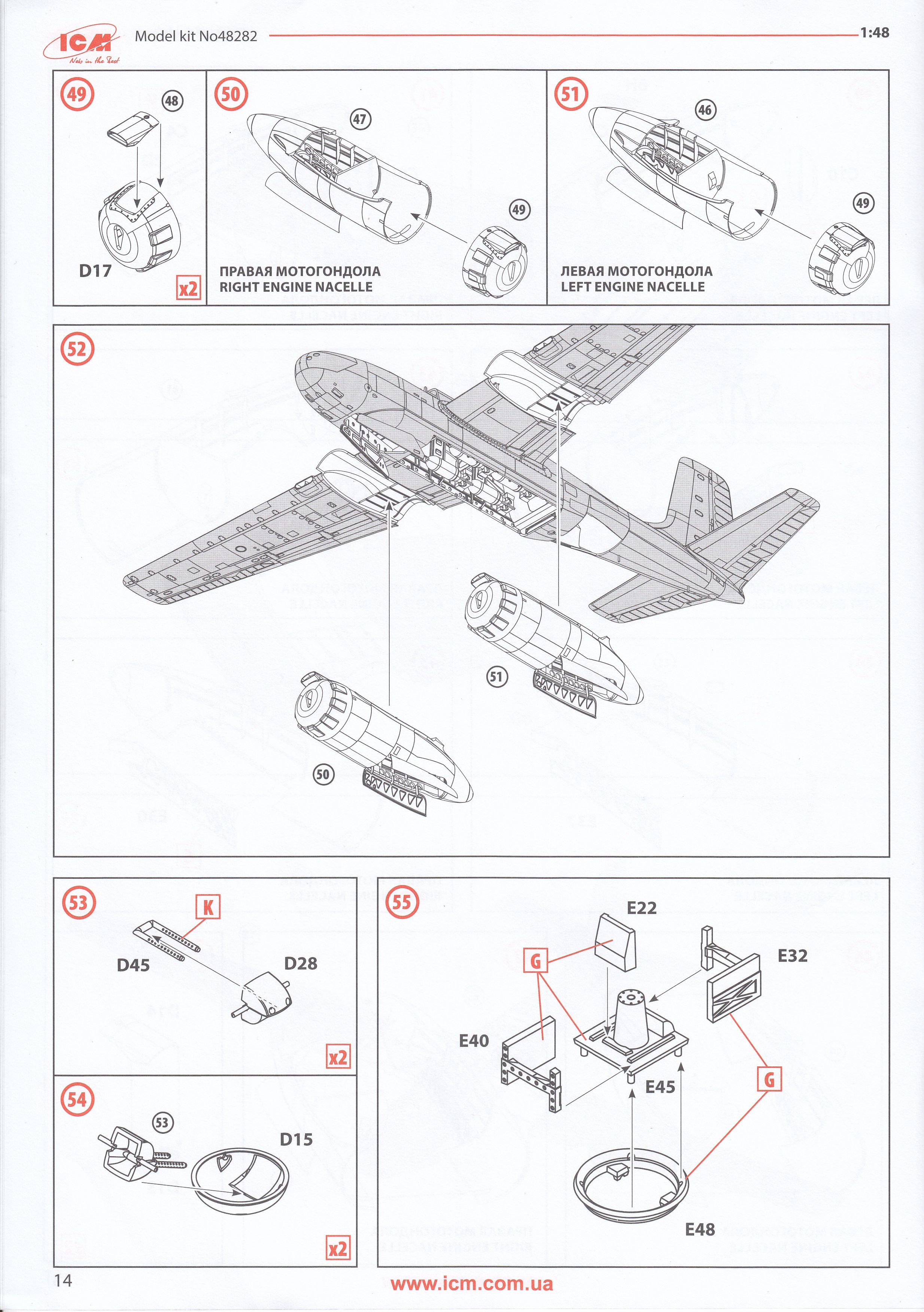
|
|||||
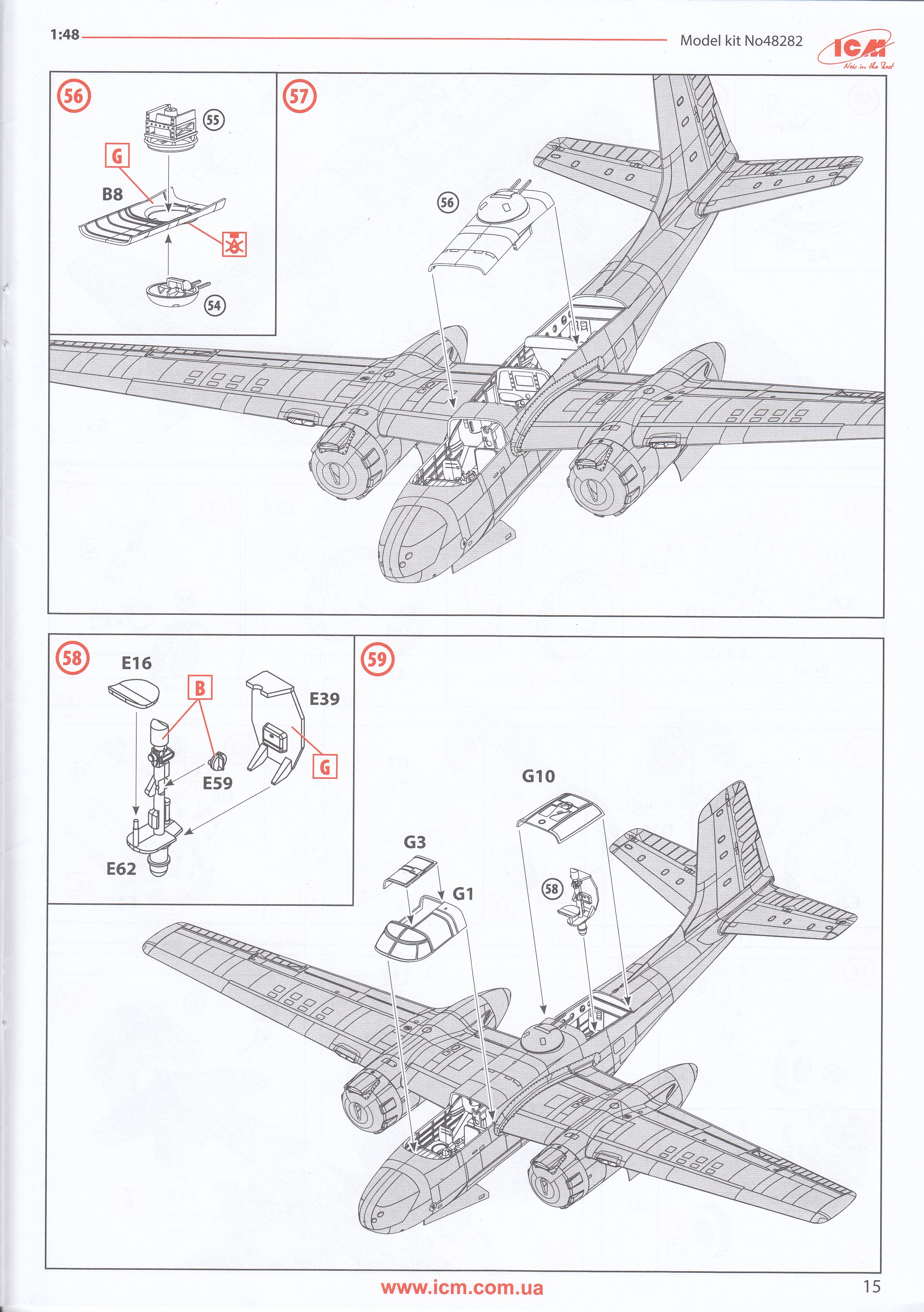
|
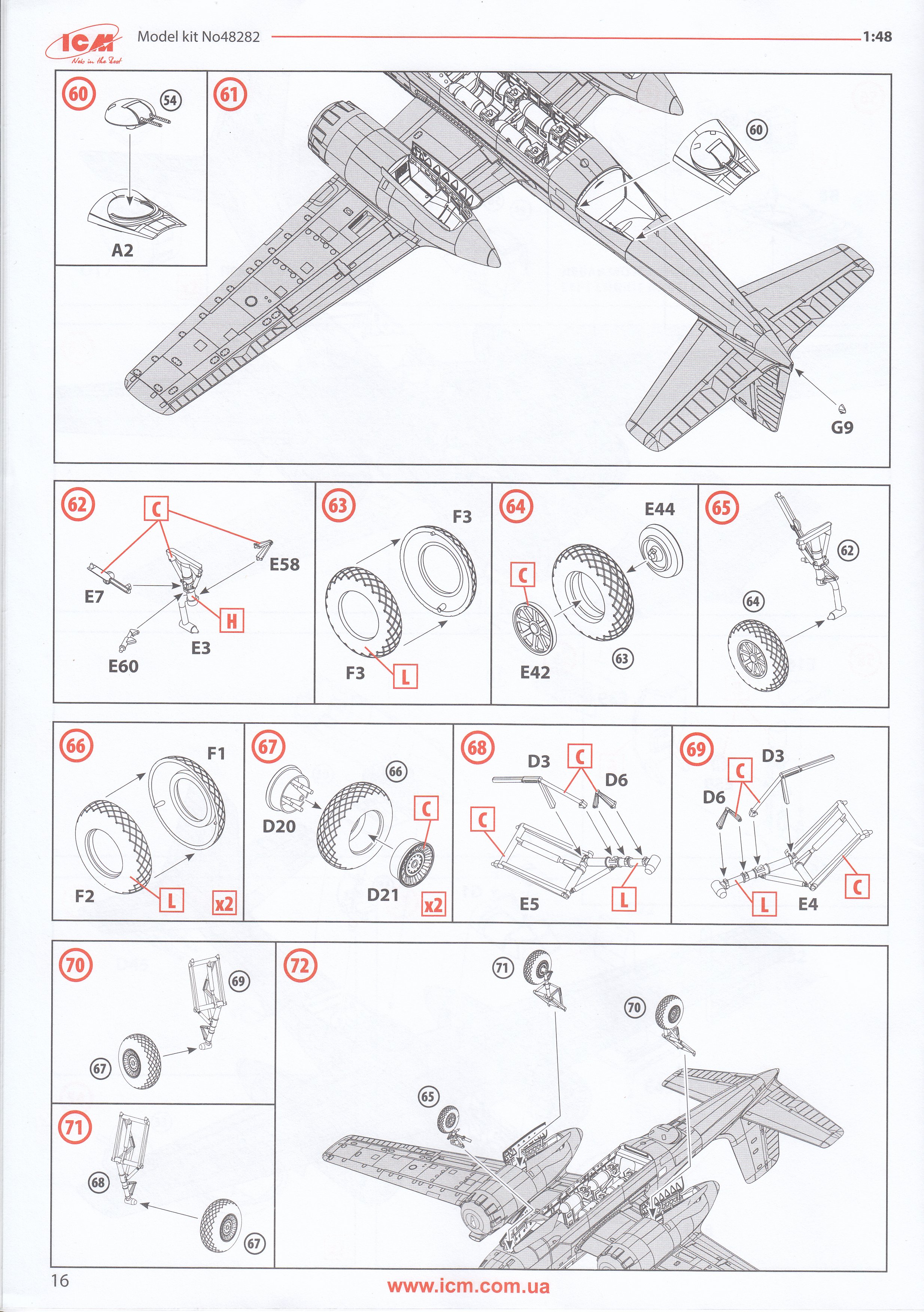
|
|||||
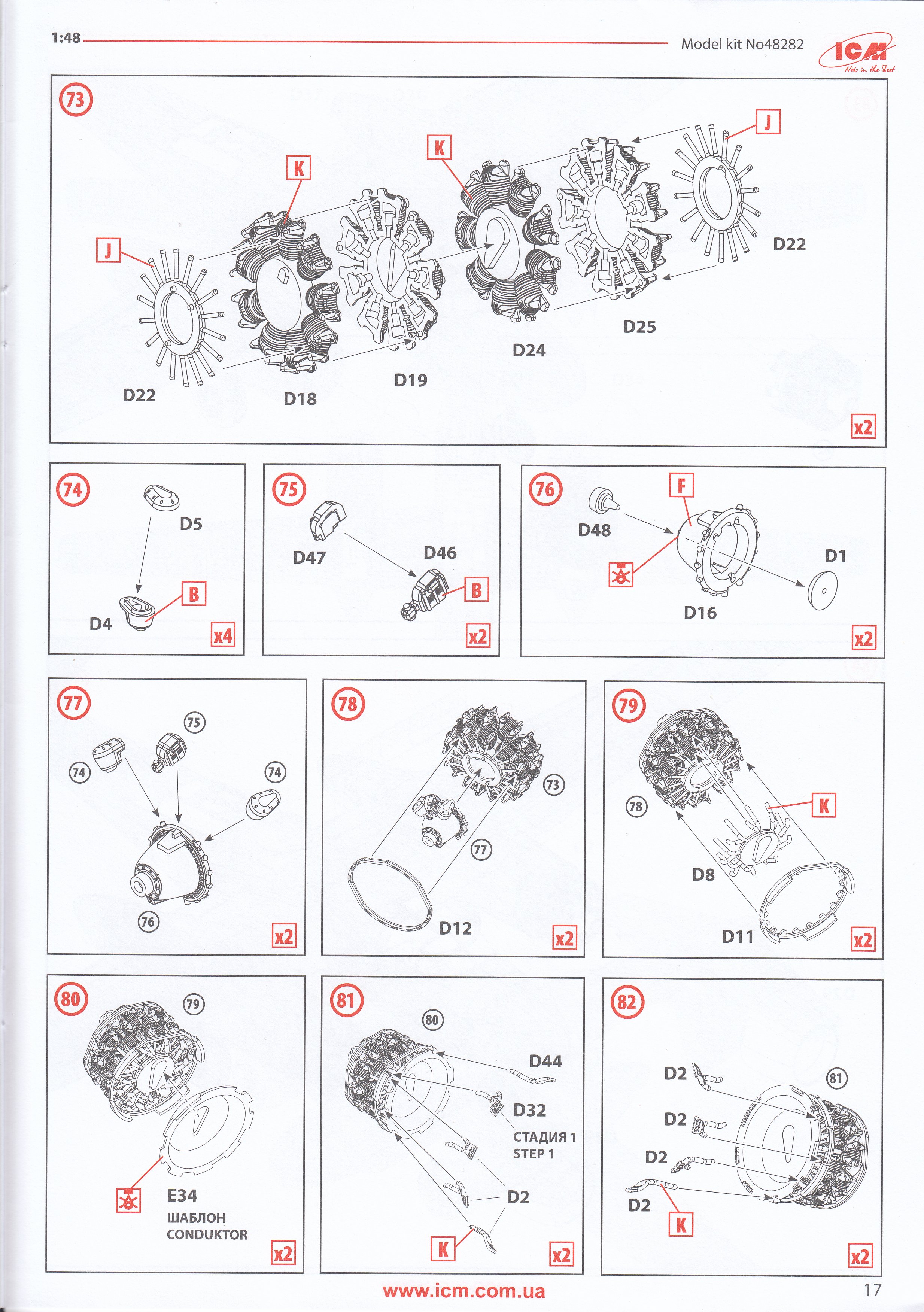
|
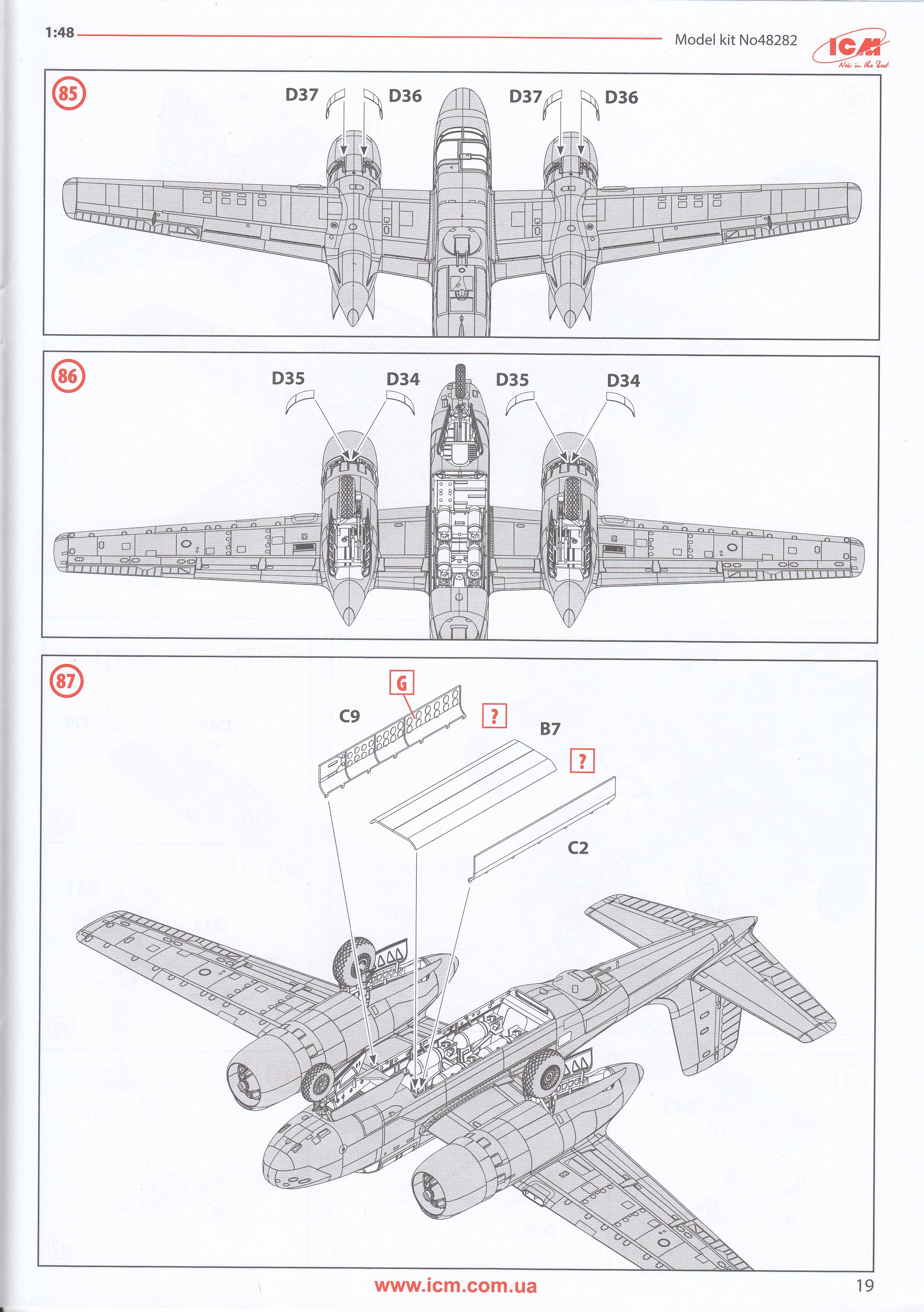
|
|||||
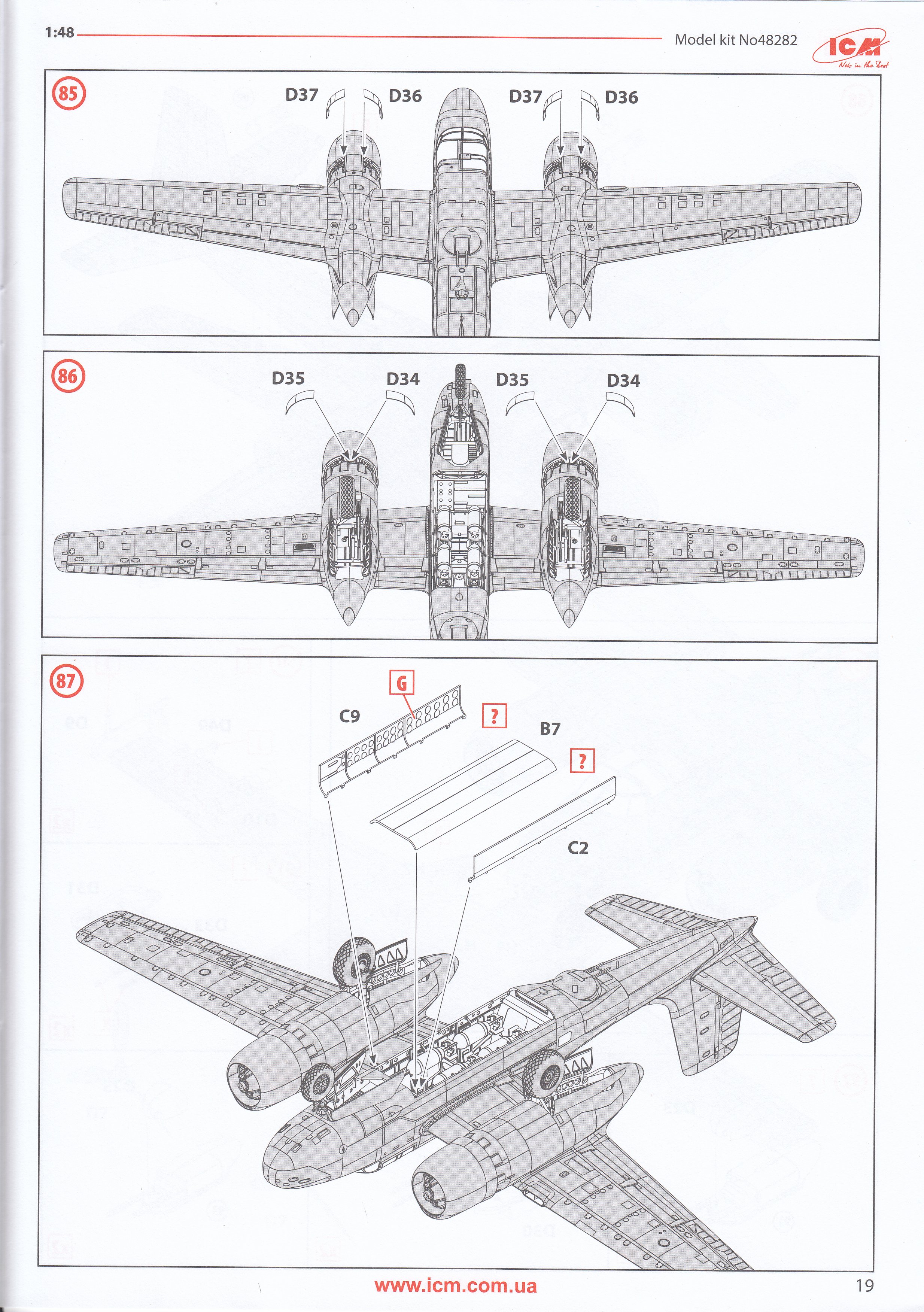
|
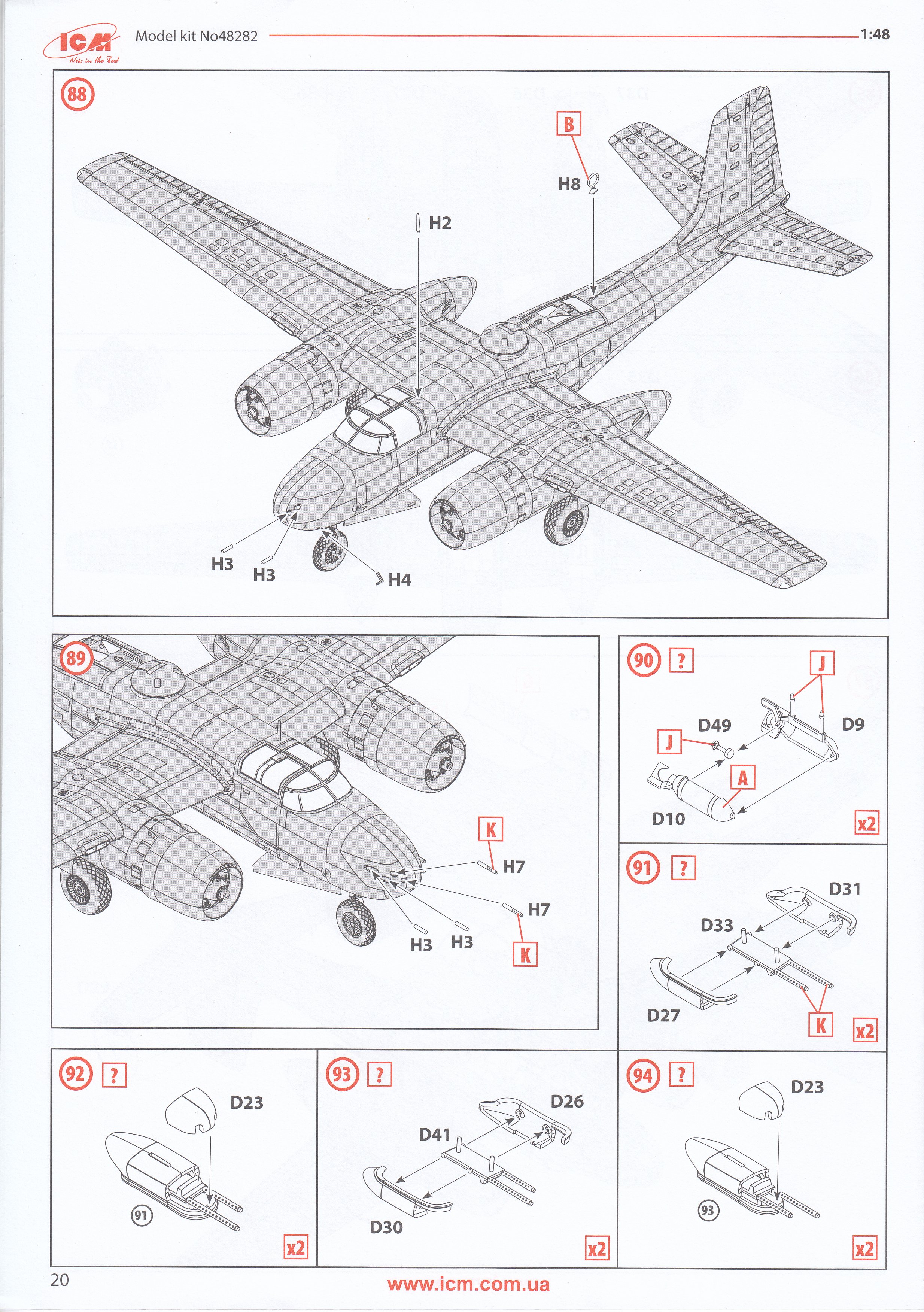
|
|||||
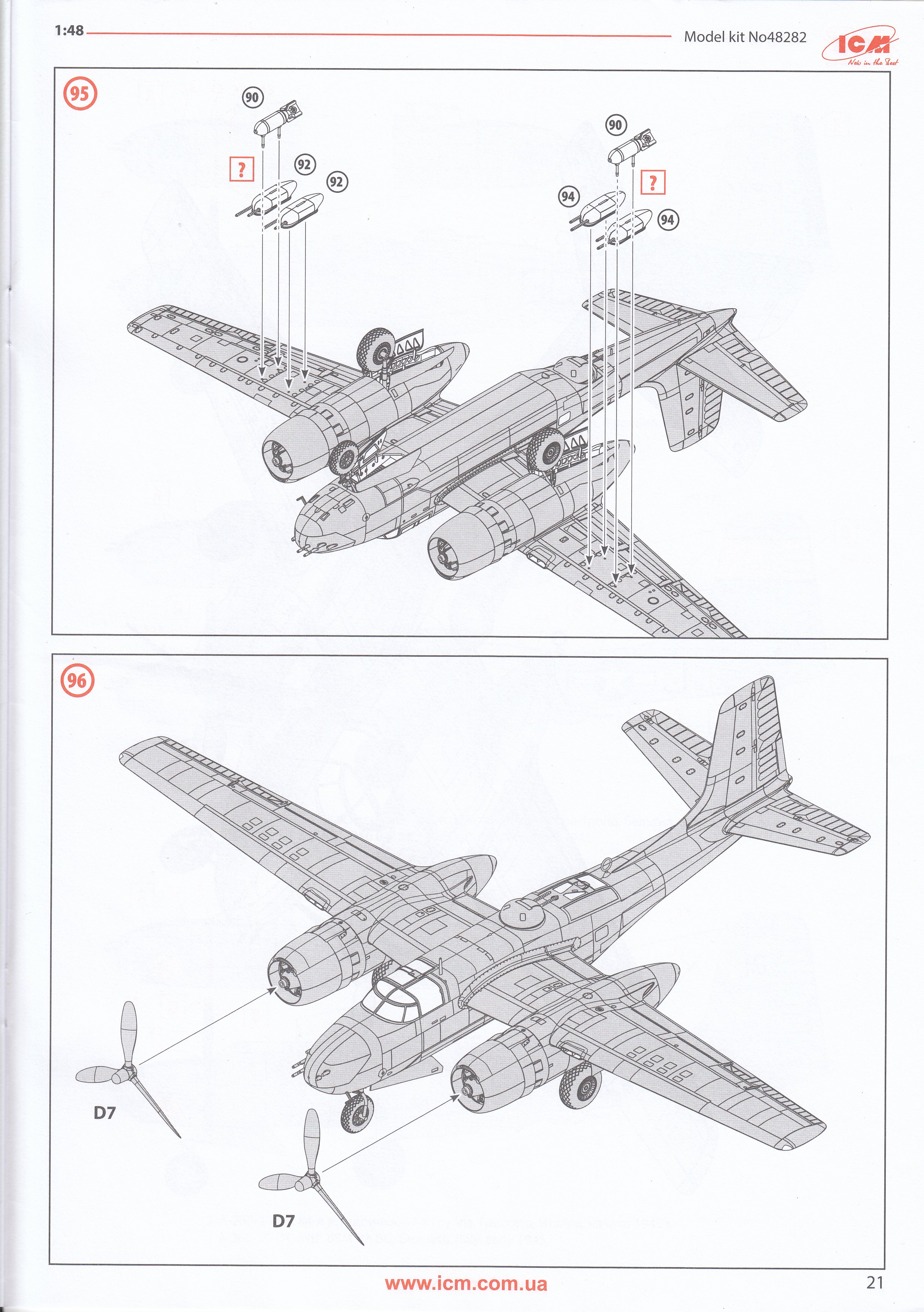
|
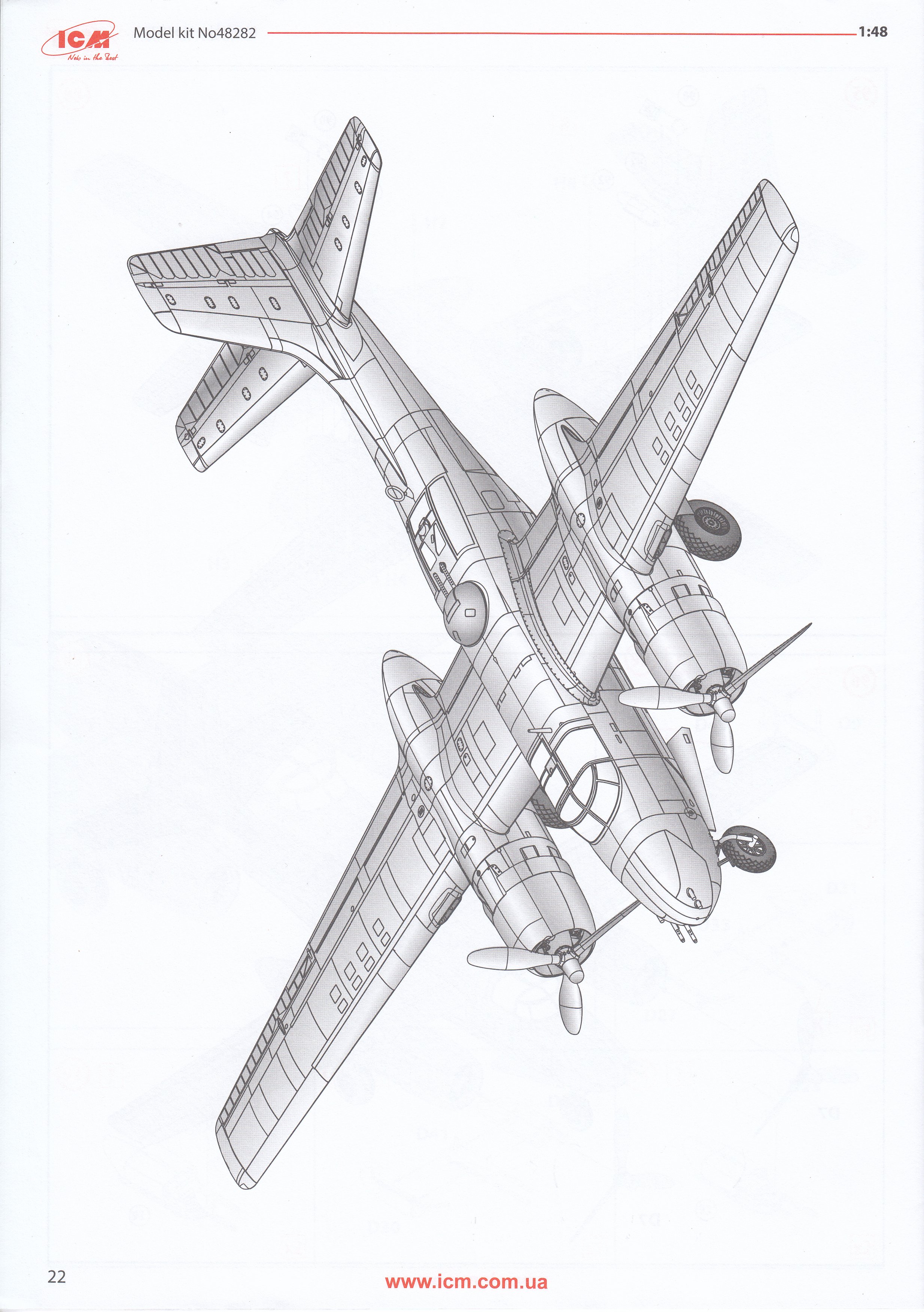
|
|||||
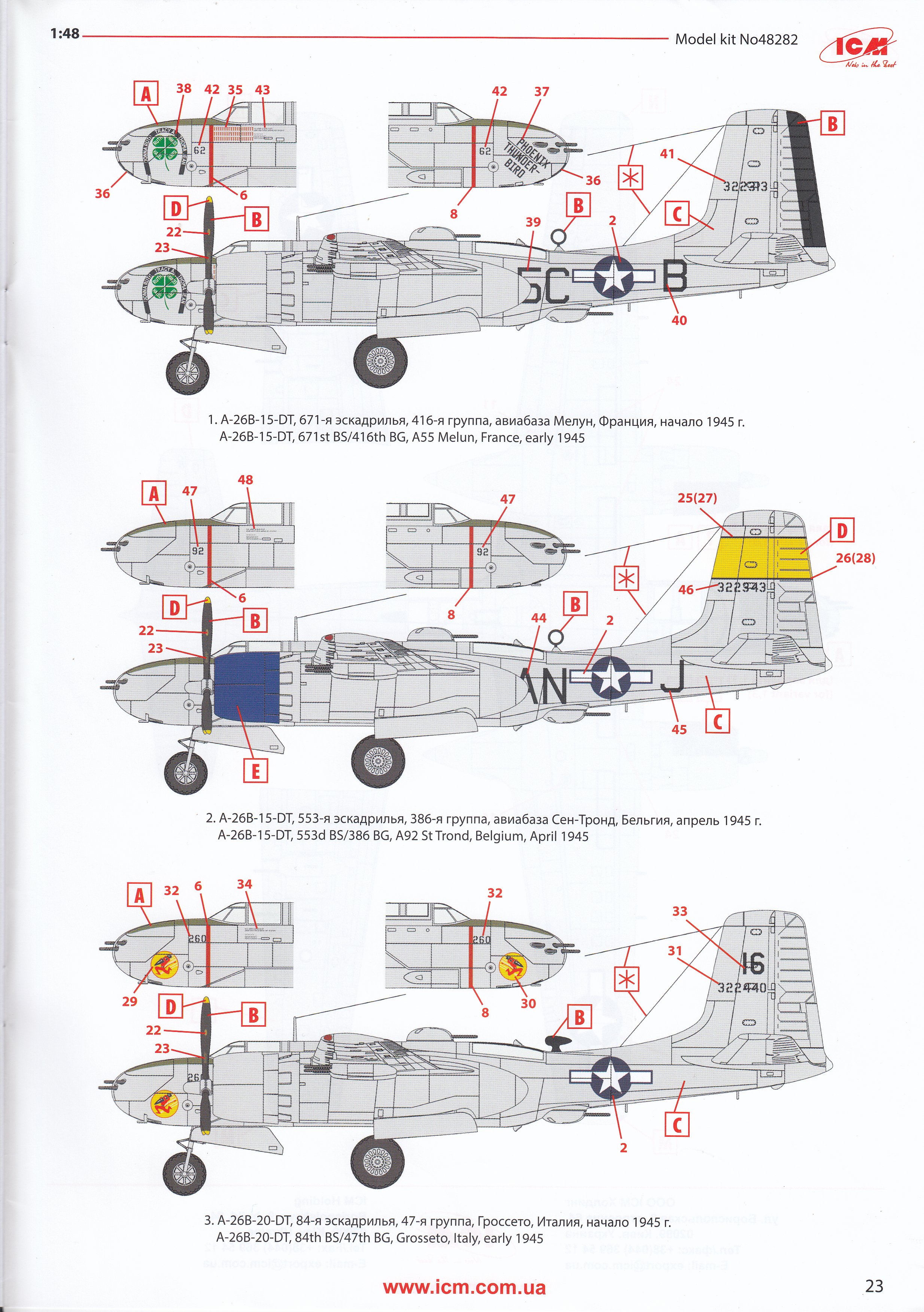
|
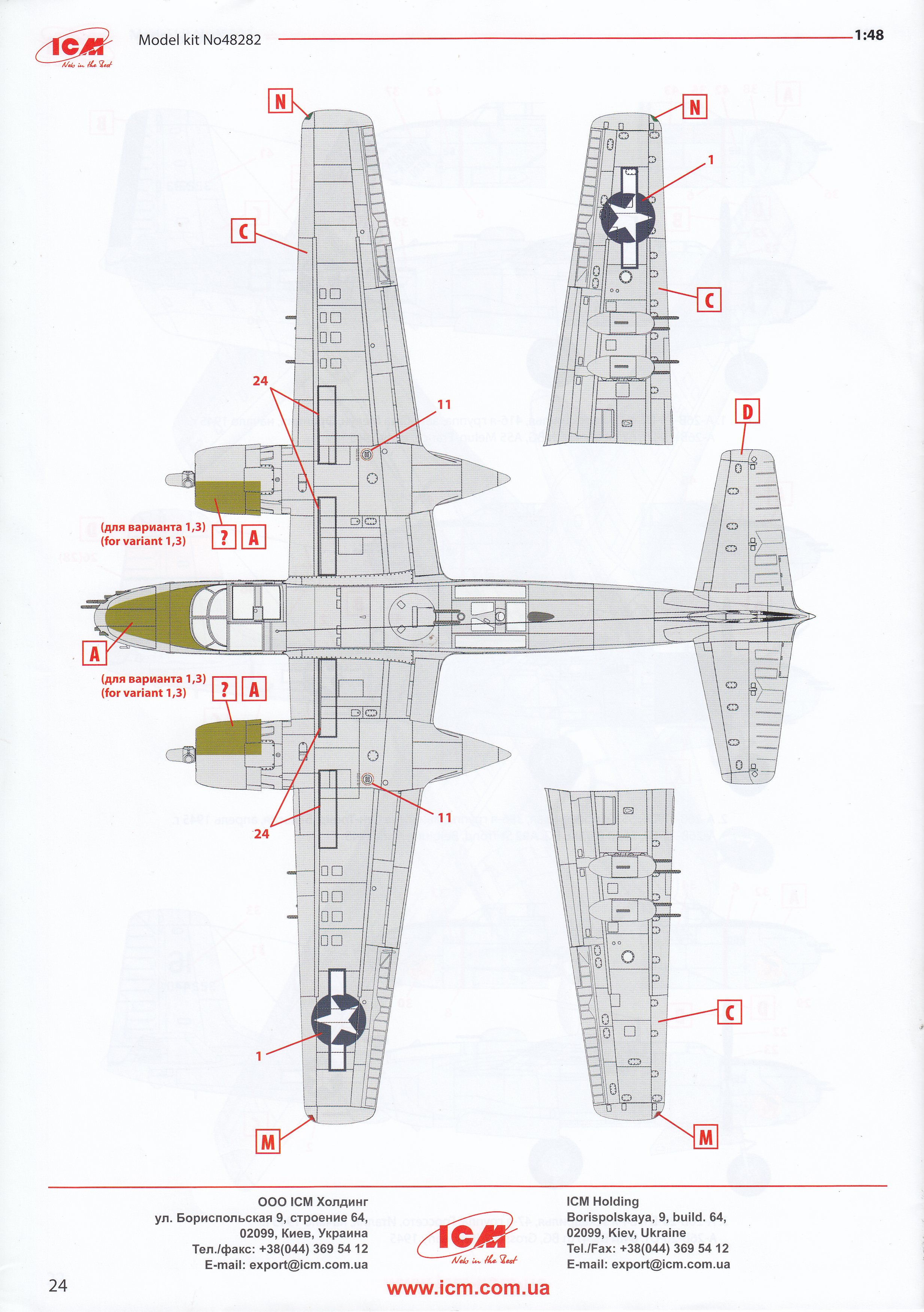
|
|||||
All content copyright Gary Wickham |